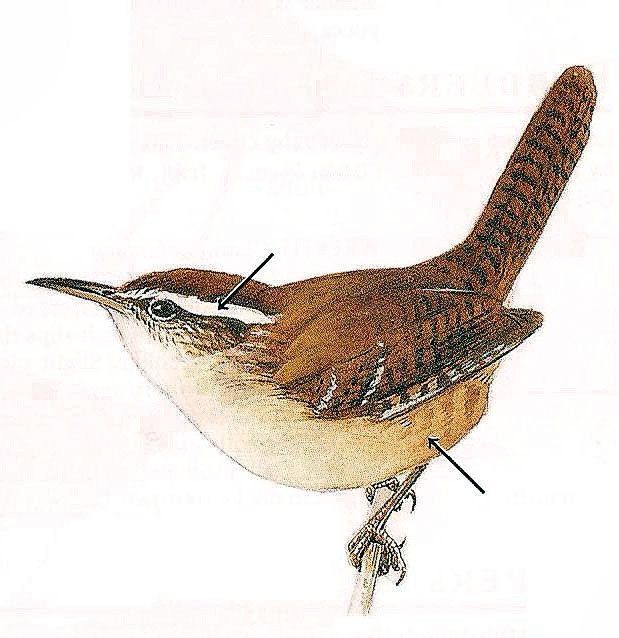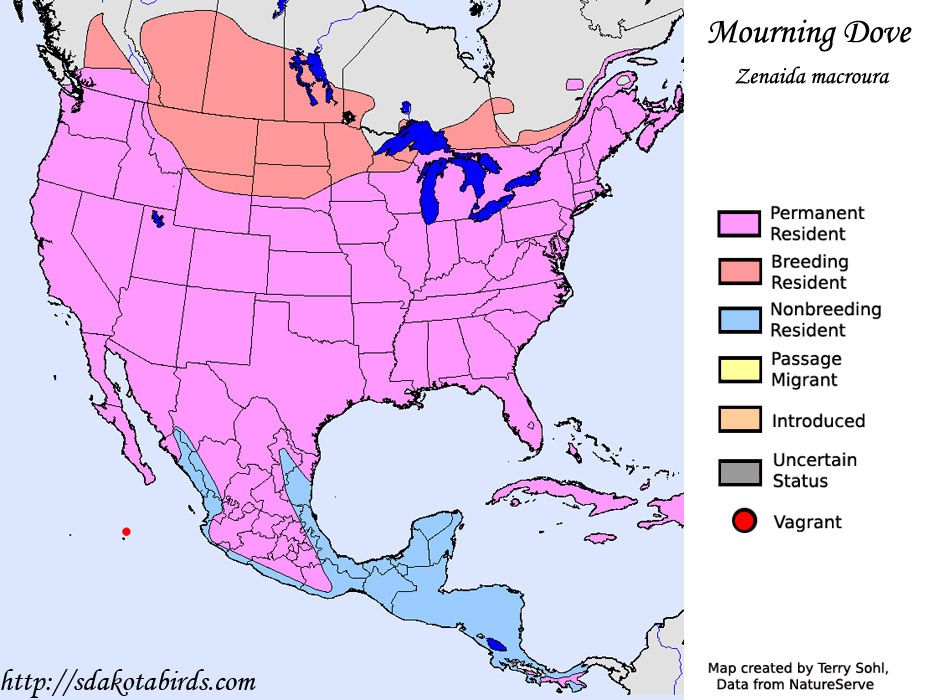What to feed baby carolina wrens
What Do Carolina Wrens Eat? (Complete Guide)
What seeds do Carolina Wrens eat?
What fruit do Carolina Wrens eat?
What do baby Carolina Wrens eat?
Where Do Carolina Wrens Feed?
How Does Winter Pose a Problem for Carolina Wrens?
What do Carolina Wrens eat in winter?
How can you help Carolina Wrens survive the winter?
Do Carolina Wrens eat from feeders?
What do you feed Carolina Wrens?
Do Carolina Wrens eat mealworms?
Other Feeding Tips
Interesting Facts About Carolina Wrens
The Carolina Wren (Thryothorus ludovicianus) has traditionally been considered a southern bird, but in the last century, it has expanded its habitat northward (in some instances are far north as Canada), presumably due to global warming. This northward movement does bring with it some challenges.
Because the Carolina Wren does not migrate and remains in its established habitat all year, it must be prepared to survive the harsher winters as it expands into cooler climates. While they are physically able to withstand the colder temperatures as long as they can find adequate food, maintaining, a suitable food supply can be a problem.
So, let's get into it; what do Carolina Wrens eat?
The Carolina Wren's diet consists mostly of insects, spiders and small vertebrates such as frogs, lizards and snakes. It also eats seeds, nuts, berries and other vegetable matter. Research conducted by Professor Beal in 1916 revealed that the Carolina Wren's diet consists of roughly 94 percent animal matter and 6 percent vegetable matter.
Interestingly, those percentages change according to the season. During the summer months, the Carolina Wren's diet consists of a mere 1 percent plant material and rises to 11 percent in the winter.
Carolina Wren with an insect in its beak
Common Sources of Animal Matter in the Carolina Wren's Diet:
- Spiders, including Daddy Longlegs, an apparent delicacy for the Carolina Wren.

- Caterpillars and Moths
- Beetles, including bean leaf beetles and cucumber beetles.
- Ants
- Bees and Wasps
- Grasshoppers and Crickets
- Leaf Hoppers, Cinch Bugs and Soldier Bugs
- Snails
- Tree Frogs
- Lizards
- Snakes
Common Sources of Vegetable Matter in the Carolina Wren's Diet:
- Acorns
- Bayberry Seeds
- Poison Ivy Seeds
- Sumac Seeds
- Fruit or Berries
- Weed Seeds
What seeds do Carolina Wrens eat?
Carolina Wrens eat seeds from native weeds and flowers, which varies depending on your location and the availability of seeds. They are known to eat bayberry, poison ivy and sumac seeds in the wild.
Carolina Wrens are reported to eat sunflower seeds and may eat other seeds in wild bird seed mixes if it is offered in the winter in feeders and their preferred food is not available.
Carolina Wren eating seeds
What fruit do Carolina Wrens eat?
Carolina Wrens eat bits of soft fruits native to the area they live in.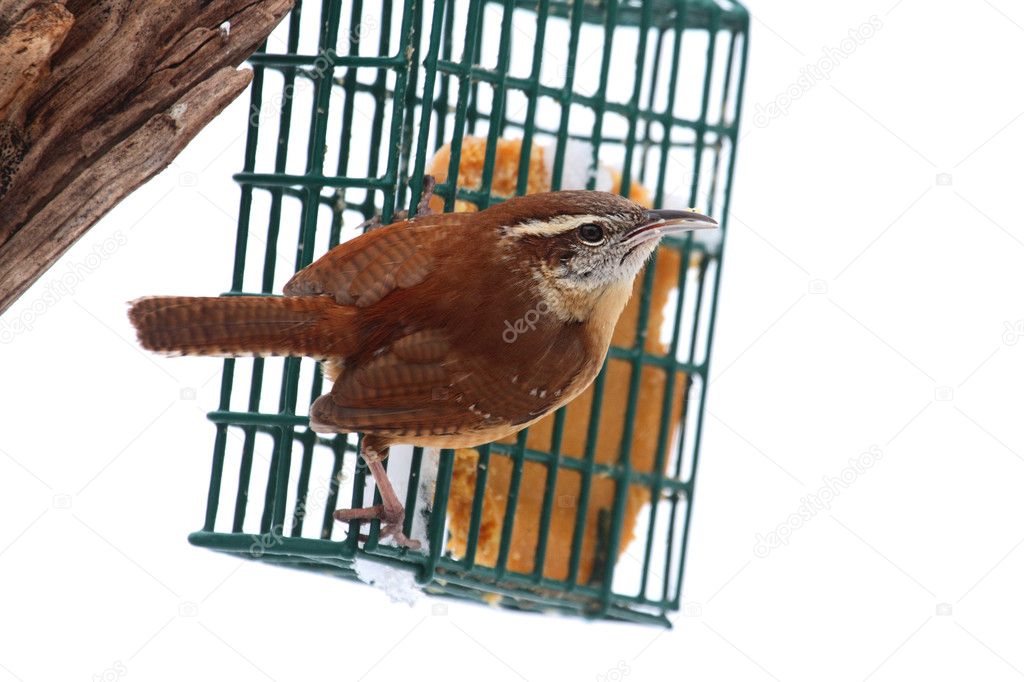 They also eat a variety of soft berries.
They also eat a variety of soft berries.
What do baby Carolina Wrens eat?
Both the male and female Carolina Wrens share the duty of bringing food to the hatchlings. This typically consists of small bits of insects, spiders and other bugs. As the babies grow, they bring them larger portions and may bring grasshopper, crickets or caterpillars to the nest.
When the fledglings leave the nest, they typically follow their parents for a few days at which time the parents continue to feed the baby birds until they are ready to fend for themselves.
Where Do Carolina Wrens Feed?
Carolina Wrens can be found foraging for food in brushy areas, under trees, on the forest floor and in thorny bushes with dense foliage. They are primarily ground feeders and spend their time hopping from place to place and rummaging through leaf litter with their curved beak to uncover bugs and insects. They also feed in or around old bark on trees, fallen logs and brush piles where they likely seek out spiders and insects.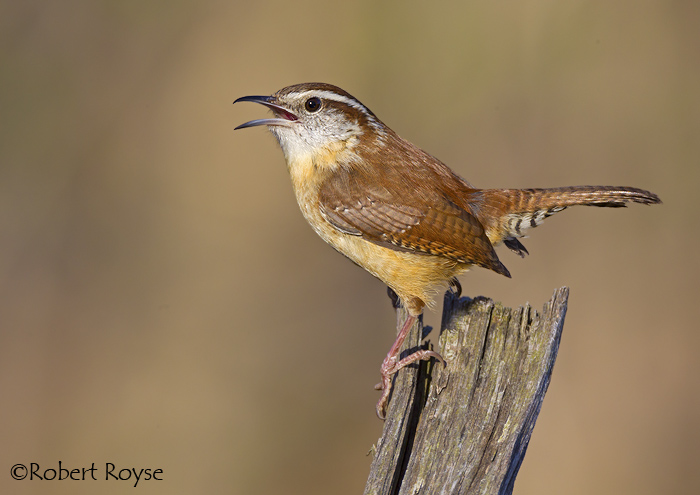
Carolina Wren foraging in the grass
How Does Winter Pose a Problem for Carolina Wrens?
Carolina Wrens expend a lot of energy with their constant motion and high metabolic rate, which means they need a constant and dependable food supply just to maintain their body temperature and keep from succumbing to the cold.
In the winter, especially when there is snow on the ground, they may not be able to find enough food on their own to sustain themselves. Many spiders and insects die, small vertebrates go into hibernation, and vegetation may be sparse. This all adds stress to the life of a Carolina Wren and maybe more than they can handle on their own. During cold spells, the mortality rate is high.
What do Carolina Wrens eat in winter?
In the Winter, Carolina Wrens forage for available food, such as old berries and fruit. They also take advantage of old seed heads and nuts, such as acorns. The food supply is often limited during the winter months.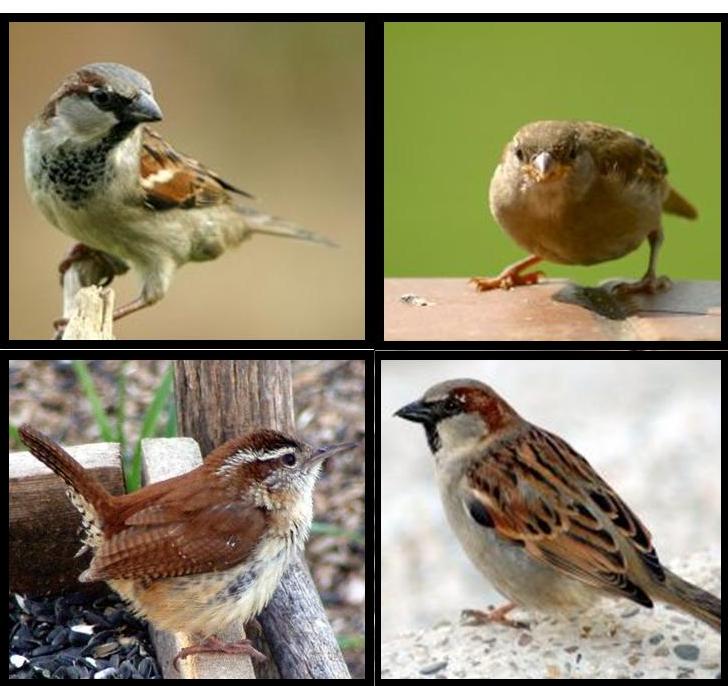
Carolina Wren searching for food in the winter
How can you help Carolina Wrens survive the winter?
Providing a reliable and steady food source for Carolina Wrens increases their winter survival rates. Although there is evidence that the Carolina Wren can, and does, adapt to new food sources, the best way to help out is to provide foods they are known to consume.
Do Carolina Wrens eat from feeders?
Carolina Wrens may visit backyard feeders, especially platform feeders, but they are most comfortable feeding on or near the ground.
If Carolina Wrens shy away from your existing feeders, consider spreading seeds and nuts of the ground under the feeders. Likewise, try hanging suet feeders near shrubs and thorny bushes where the Carolina Wren feels most comfortable.
Carolina Wrens feeding from a bird feeder
What do you feed Carolina Wrens?
Try to vary the food you provide for Carolina Wrens, as some may prefer one food source over another. Here are some good choices:
Here are some good choices:
- Sunflower Seeds: The Carolina Wren is reported to eat sunflower seeds, but the best bet is to provide them with sunflower kernels or sunflower hearts as these are a convenient size for the Carolina Wren to eat.
- Suet: Look for High energy suet that contains both fat and protein. There are many varieties to choose from, from suet filled with fruits and nuts to those flavored with peanut butter or other enticing flavors. Observe the feeders closely to determine which kind of suet your Carolina Wrens prefer.
- Dried Nuts and Berries: Try an assortment of dried nuts and berries found in songbird seed blends.
- Peanuts: Carolina Wrens typically love shelled peanuts or peanut hearts. These are packed with protein and fats to give them the energy they need. At least one source claims one peanut provides one-third of a Carolina Wren's metabolic need for an entire day.
Do Carolina Wrens eat mealworms?
Carolina Wrens love mealworms and will devour them with a passion. Offering them mealworms at the bird feeder or in a shallow bowl near the ground or near shrubs where they frequent provides them with a good source of protein in the winter.
Offering them mealworms at the bird feeder or in a shallow bowl near the ground or near shrubs where they frequent provides them with a good source of protein in the winter.
If your Carolina Wrens are not eating the mealworms you provide, try soaking dried mealworms in warm water before offering them to your Carolina Wrens.
Carolina Wren with worm in beak
Other Feeding Tips
Because there are seven subspecies of the Carolina Wren, not every Carolina Wren will have the same food preferences or feeding habits. Each subspecies may make food and behavioral adaptations to suit the area it calls home. This makes it important to explore the feeding preferences of the Carolina Wrens in your area to find what works best for you.
All birds need water to survive and may find it difficult to find in the winter. Providing a heated birdbath is an excellent way to provide your Carolina Wrens with a source of fresh, clean water in the winter.
Interesting Facts About Carolina Wrens
- The Carolina Wren is a mere 5.
 5 inches from the tip of the beak to the tip of the tail, but it has an amazing 11-inch wingspan.
5 inches from the tip of the beak to the tip of the tail, but it has an amazing 11-inch wingspan. - The male and female Carolina Wren look alike. Their body is reddish-brown with orange-brown underparts.
- The Carolina Wren has a dark, slightly curved beak.
- It has a long tail that flicks up and down as it forages for food or flits among bushes.
- The Carolina Wren has black eyes and distinctive white eyebrow stripes.
- Its face and chin are white or light tan.
- The Carolina Wren has a life expectancy of 6 years.
- Carolina Wrens may nest in old plant pots, in abandoned structures or in shrubs near the home.
- Carolina Wrens are territorial and are aggressive in defending their nests. The breeding pair may chase or peck predators or dive-bomb humans to protect their nests.
- Carolina Wrens are monogamous and remain with the same mate for several years.
Carolina Wrens can be seen flitting in shrubs and other small bushes or foraging for food under leaves and other litter under trees.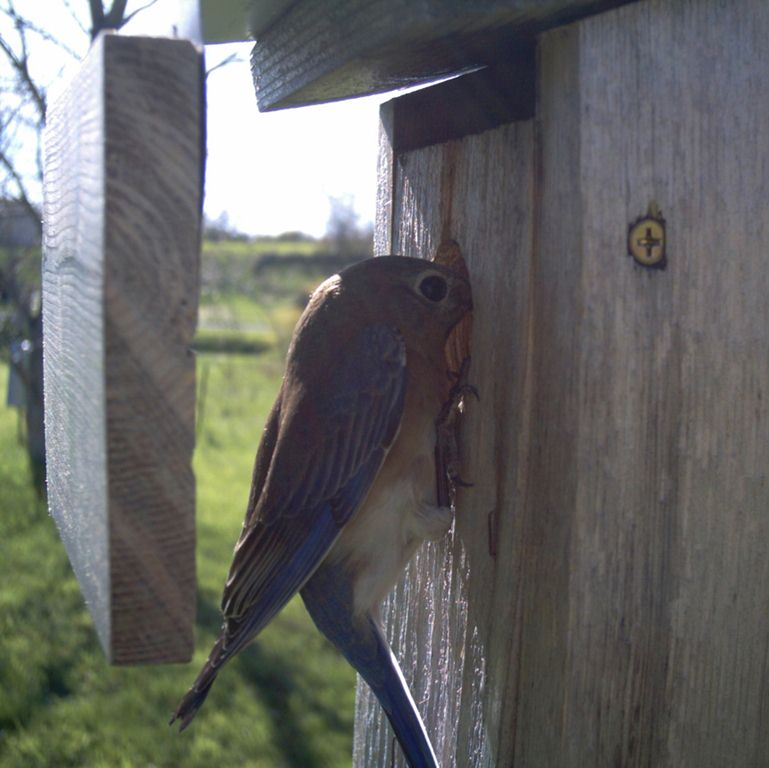 They also hop up and down the trunks of trees, searching for insects under the bark or in crevices. They frequent brush piles and often seek out nesting spots near or in abandoned buildings. Because they do not migrate, the same Carolina Wrens will likely remain in your backyard year-round.
They also hop up and down the trunks of trees, searching for insects under the bark or in crevices. They frequent brush piles and often seek out nesting spots near or in abandoned buildings. Because they do not migrate, the same Carolina Wrens will likely remain in your backyard year-round.
Expert Q + A
Ask a question
Do you have a question about this topic that we haven't answered? Submit it below, and one of our experts will answer as soon as they can.
What Do Baby Wrens Eat?
As an Amazon Associate I earn from qualifying purchases.
A Rare Blue-Colored WrenWrens are frequently encountered across North America. These birds construct their nests in a variety of unusual locations, including old boxes, discarded cans, and even within barns and garages. It’s not uncommon for humans to discover abandoned wren babies or youngsters who’ve fallen from the canopy. It’s difficult to care for a wild wren, but with the right tools and understanding of how it works, it becomes much easier.
If the baby wren is uninjured, return it to the nest. If you can’t find the nest, wrap some newspaper around a berry basket and conceal it among dense bushes. Take any injured bird to your local veterinarian or a wildlife conservation organization if possible. If the parents are not contacted for three hours after the bird is returned to the nest, assume they have abandoned it and take it to a veterinarian, an animal shelter, or an indoor facility where you can care for it.
Caring for a baby wren requires effort and consistency. In this article, we explain how you can help a baby wren in an effective manner.
What Do Baby Wrens Eat? Baby Wrens Eat GrasshoppersThe diet of a baby wren is exclusively small terrestrial insects. The young and adults eat mostly spiders, bugs, and beetles while the youngsters still in the nest are fed mostly grasshoppers, caterpillars, and crickets. Adult wrens will feed their young, as well as supplement their own diet, with mollusk shells.
Wrens eat a wide variety of foods, most of which are high in protein. If they’re unable to find any bugs nearby, Wrens will resort to consuming insects. If insects aren’t found either, then their alternative option will be to feed on berries. Mealworms, peanuts hearts, peanuts, suet, and occasionally snail shells are all used to provide digestive grit in baby wrens. Digestive grit refers to the grinding of food in their stomach, which is aided by the presence of larger particles. You may attract a house Wren to your yard by putting some peanut butter on a stump or hanging a suet feeder. Wrens are an important part of your yard. They can consume all of the bugs and they’re fascinating to watch. The House Wren eats berries and insects, making it an omnivore.
Beetles Are Consumed By Baby WrensWarmth is important for baby wrens, especially if they’re abandoned in the wild. Line a shoebox with newspaper or paper towels and fill it with hot water. Small holes should be cut in the box’s lid and the baby bird should be placed inside.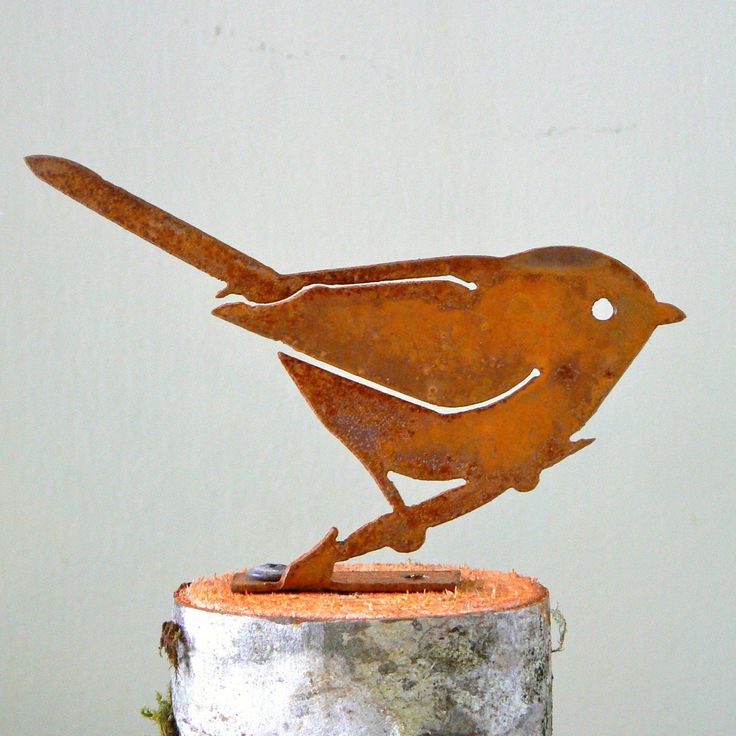 Keep the box hidden from children and pets by keeping it covered and away from them. Use a desk lamp with a high-wattage incandescent bulb to provide warmth. Fluorescent lights, on the other hand, do not give enough heat.
Keep the box hidden from children and pets by keeping it covered and away from them. Use a desk lamp with a high-wattage incandescent bulb to provide warmth. Fluorescent lights, on the other hand, do not give enough heat.
Baby wrens should be fed on a regular basis. Baby birds require food every 15 to 20 minutes when the sun is shining. To create a thick liquid, combine one part protein, such as canned puppy pup food or dried beef baby food, with two parts high-protein baby cereal or powdered grain meal. Feed the infant via a syringe or eyedropper.
Baby Wrens Eat SpidersNow it’s time to teach the baby wren how to eat insects. Offer tiny crawling insects, such as mealworms, at each feeding when your youngster is younger. To encourage a feeding response, press an insect against the beak of the baby wren. Because feeding is natural, don’t worry if it takes some practice.
Peanuts Are Also A Part of a Baby Wren’s DietReplace the container with a larger box as the bird matures.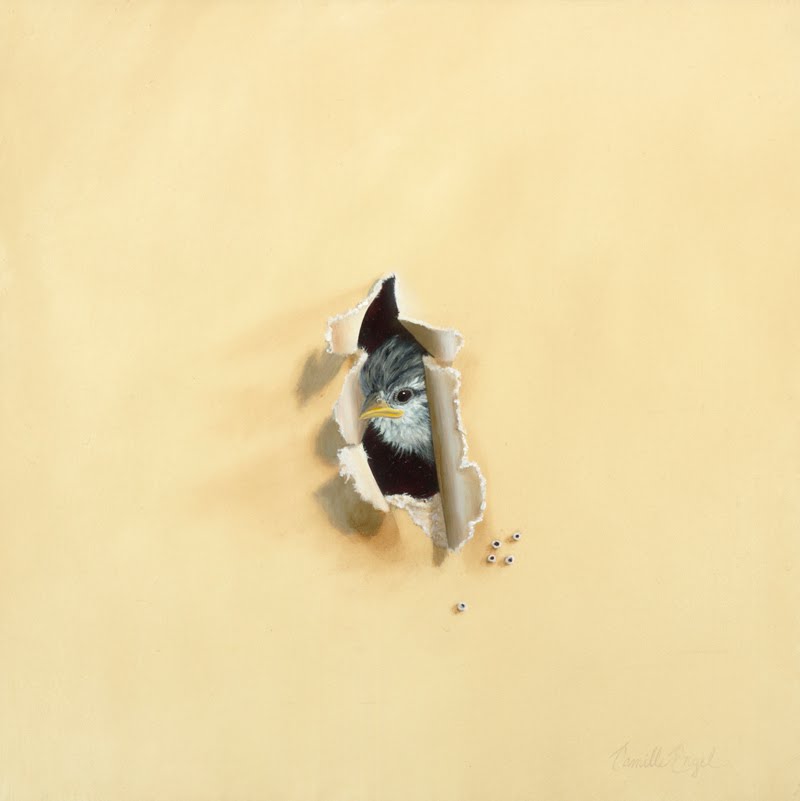 Old birds will become claustrophobic in a shoebox and require more space. Take the pet outside in a cage or box on occasion to acclimate it to the outdoors. Do not allow the baby wren to fly about freely in its habitat.
Old birds will become claustrophobic in a shoebox and require more space. Take the pet outside in a cage or box on occasion to acclimate it to the outdoors. Do not allow the baby wren to fly about freely in its habitat.
Once the baby wren is released, turn on some music and start dancing. Place the cage or box in an outdoor space that you’re familiar with where no dogs or cats are allowed to roam. Leave the lid or door open, and watch the bird fly off on its own. Leave the wren in its cage for several weeks so it has time to get used to you, but don’t handle or talk to it. The wren will revert to being wild at some point.
How Much Do Baby Wrens Eat?Feed the baby wren every 15 to 20 minutes throughout the day. Soak the kibble in water until it is soft and pliable. Dry out the water before mixing in a kibble and baby cereal with a ratio of 1:2. This will create a fluid mixture. It must be a liquid state. Fill the dropper or syringe and press the food into the bird. Make sure the food does not end up under its tongue if you’re feeding a fledgling nestling since this might obstruct its airway.
Make sure the food does not end up under its tongue if you’re feeding a fledgling nestling since this might obstruct its airway.
Place newspaper on the shoe box and line it up. Place the baby bird inside and punch holes in the top of the shoe box. Cover the shoebox with the lid and shine the lamp on it. Turn on (insert the light bulb and turn it on).
Can Baby Wrens Be Kept As Pets?No, house wrens are not a good choice as pets. These little birds may be aesthetically appealing, but they do not function well in a living environment. These are wild birds that require ample area to fly and explore. It is illegal to keep one as a pet in most areas.
It is against the law to keep wild birds, and they must be released as soon as feasible. It’s critical that little human interaction occurs so that the bird does not become domesticated. When a wild bird is discovered, it is HIGHLY advised to turn it over to the proper authorities.
Put your finger in the baby bird’s feet to determine whether it is a nestling or a fledgling.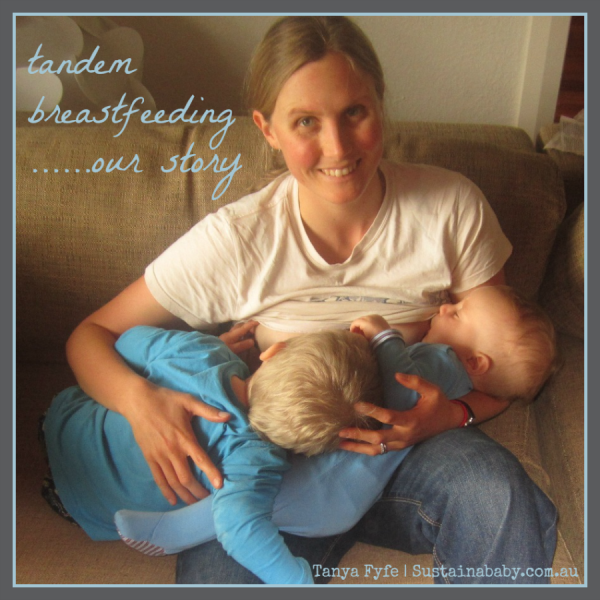 A fledgling has a firm grip on your finger if it does. It is a nestling if there is no hold on your finger at all. Watch the birds‘ nest for two hours after you put the wren back in. Assume that the parents have died if there is no parental care and contact your local wildlife conservation. It’s a myth that parent birds would abandon their young if they come into touch with humans.
A fledgling has a firm grip on your finger if it does. It is a nestling if there is no hold on your finger at all. Watch the birds‘ nest for two hours after you put the wren back in. Assume that the parents have died if there is no parental care and contact your local wildlife conservation. It’s a myth that parent birds would abandon their young if they come into touch with humans.
The top portion of a wren is reddish-brown and has fine darker brown bars on the wings, tail, and rump. The lower sides are pale brown with numerous, heavier streaks across the shoulders and abdomen. They have a short chestnut-hued tail with dark brown streaked sides.
The crown of a wren is browner, with fewer streaks and a pale supercilium from the bill’s base to just beyond the eye. They have long, thin bills that are slightly downcurved and black on top, with yellow on the bottom. The eyes of wrens are dark brown, and their feet and legs are pale browns in color. Male and female wrens appear identical.
Male and female wrens appear identical.
The House Wren is tiny yet has a loud voice. This creature makes chatters, rattles, and scolds when it detects potential predators. The house wren is a mundane little brown bird whose plumage varies by gender. Because of the sound it creates, you may identify a House Wren if it’s male or female.
Another indication that you’re looking at a wren is because it has white dots on its back. The wrens have evolved to blend in with their surroundings, which aids them in hiding from predators while still feeding on food. The House Wren weighs approximately half an ounce. That’s the size of half of a slice of whole-wheat bread, which is about five to six inches long. They live for up to nine years. They are typically around four to five inches long. The House Wren’s wingspan is approximately 6 inches. The House Wren flies near to the ground in its airborne method of transport. They are bright and lively, just like their music. However, they may be rather territorial.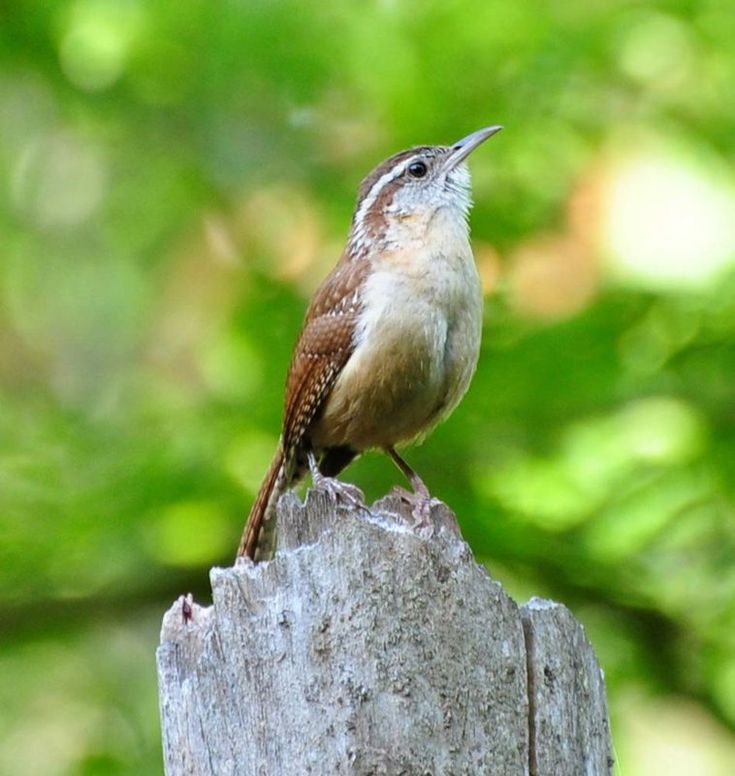
The head, nape, and neck of baby wrens are crimson with streaks, while the underparts are streaked with black.
What Are The Natural Predators of Baby Wrens?The Wren is vulnerable to a variety of predators, including cats, opossums, rats, and woodpeckers. The female will lay one egg each day until five or six eggs are laid after choosing and constructing the nest.
At 12 to 15 days, the nestlings remain in the nest for 12 to 15 days. The mother leaves the nest periodically to obtain food while she is incubating. The period of time when the baby remains in his or her parent’s nest is known as incubation.
House Wrens’ songs are very strident, as they are produced in periods of time. They frequently do so during the breeding season to bring in additional mates. The House Wren leaves for warmer climes during the winter, but the trip is hazardous. The Wrens live in the southern United States, and they are among the most distinctive birds. Because of how harsh winter is, only half survive.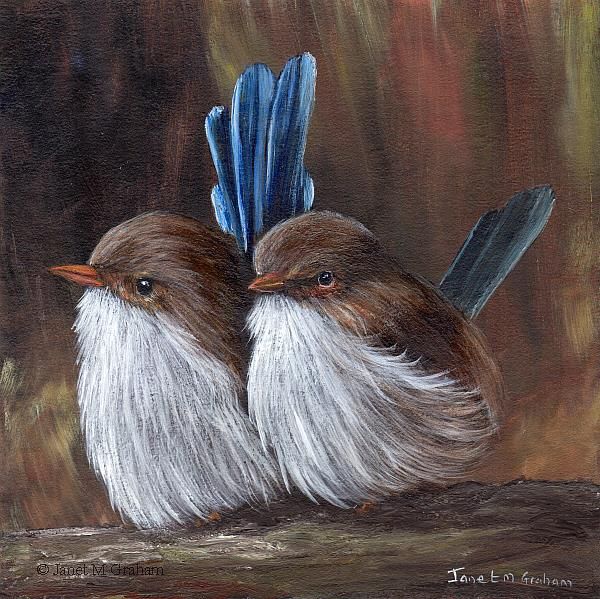 The House Wren is a fantastic creature with an amazing song.
The House Wren is a fantastic creature with an amazing song.
The house wren is a tiny bird that commonly flies and nests low to the ground, thus it is consumed by a variety of predators. Rats, opossums, foxes, squirrels, raccoons, owls, kites, and snakes are among the many creatures that may be found in any environment. Woodpeckers, like wrens, can also take revenge on tiny birds for stealing their eggs. The pugnacious little songbird, on the other hand, does not shy away from attacking predators with its sharp beaks and claws.
Amazon and the Amazon logo are trademarks of Amazon.com, Inc, or its affiliates.
Methods for breeding chicks | Children about animals
Author: N.А. Rubakin, 1909
8507 There are birds who are completely unfamiliar with the art of building and who do not know how to build any nests. There are birds that do not incubate eggs at all and do without it.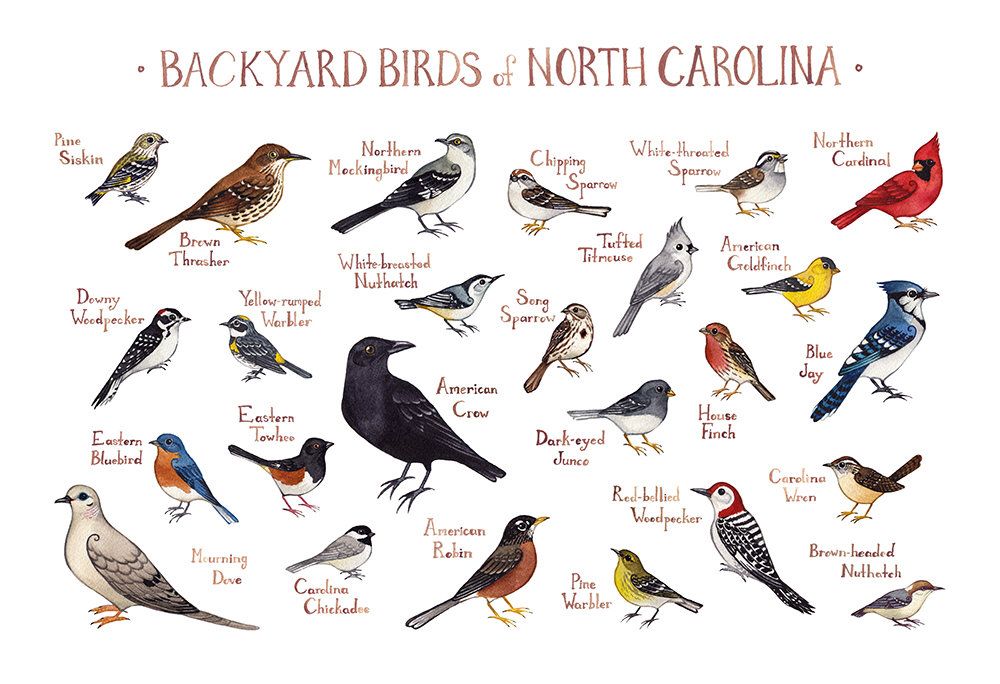
A bird that does not build its own nests and does not incubate its eggs! Strange as these words sound, such birds exist in the world. And they are not even few. Such, for example, are our cuckoos, Argentine and American cow starlings, Australian talegalls and latims, African ostriches and some other birds. All these breeds do not build any nests, although they lay eggs; but when they lay eggs, they do not incubate them, or hardly incubate them, leaving other birds or the sun or something else to do this business.
But how is it that these bird breeds do not die out in this case? This happens because, firstly, it is possible to incubate eggs without any nest, and secondly, the incubation itself can be replaced by something else and, moreover, without any harm to the eggs and offspring.
Cuckoos and American starlings abolish the unpleasant and tedious work of incubation in this way: they simply throw it off their necks and put it on birds of other species.
Ostriches leave the incubation of their eggs to the sun, to the warmth of the sun; finally, there are birds that do not even do this: they know another source of warmth, which they use for their own purposes.
It is very interesting to get acquainted with all these methods of birds.
As you know, chickens hatch goslings very well. On the other hand, you can put a chicken egg, like any other bird, under a duck and, in general, under a bird of a foreign breed, and still excellent chicks will come out of the egg. Even humans can incubate eggs. There is a story about a Roman empress who until then carried a swan egg on her chest until a chick hatched from this egg. Hatching can finally be done by a simple machine. There are now many such machines, both large and small, that hatch chickens by the thousands.
Such hatching machines or apparatus are called "incubators". They make it possible to hatch at the same time, firstly, as many as hundreds of chickens, secondly, they are very cheap to hatch, and thirdly, at any time. Such incubators are more or less large boxes in which you can put as many eggs as you like, and then evenly heat them to the warmth of the body of a chicken for twenty or 22 days. The female sitting on the eggs is the same heating pad, and incubation comes down to such and such a heating, uniform and prolonged. The development of the embryo in the egg begins at the same time and proceeds by itself.
Such incubators are more or less large boxes in which you can put as many eggs as you like, and then evenly heat them to the warmth of the body of a chicken for twenty or 22 days. The female sitting on the eggs is the same heating pad, and incubation comes down to such and such a heating, uniform and prolonged. The development of the embryo in the egg begins at the same time and proceeds by itself.
The bird, taking up brooding, obeys the needs of its body. First of all, to her. A laid egg, in the eyes of a bird, is a piece of its own body. Taking care of the egg is taking care of the body, of oneself. This explains why birds are taken for incubation of eggs.
This is much less surprising than, for example, the fact that the cuckoo does not incubate its eggs at all and does not treat incubation like an ordinary bird.
As you know, the cuckoo assigns this responsibility to other birds.
Currently, up to 67 bird species are known in whose nests the cuckoo lays its eggs. But its particular preference is for the nests of the robin, chaffinch, warbler, warbler, pliska, squaw, and the forest hawk.
But its particular preference is for the nests of the robin, chaffinch, warbler, warbler, pliska, squaw, and the forest hawk.
Cuckoo eggs are not always colored the same, but vary in different localities. This remarkable fact is explained by the fact that different bird breeds predominate in different areas. It is said that the old cuckoo places her eggs in a nest where they are similar in color to the eggs already in the nest. This is indeed confirmed by the fact that the eggs of the cuckoo always more or less resemble those of the bird in whose nest they are laid.
Before laying an egg, the cuckoo searches for a suitable nest. For this purpose, it flies through dense bushes, and high above the ground, even flies into buildings, for example, into barns and sheds.
The cuckoo never chooses an empty nest for its eggs, but certainly one where the eggs are already lying. However, not all cuckoos are equally smart. Here is what one Englishman says about the cuckoo: “One cuckoo laid her egg in an old, long abandoned nest.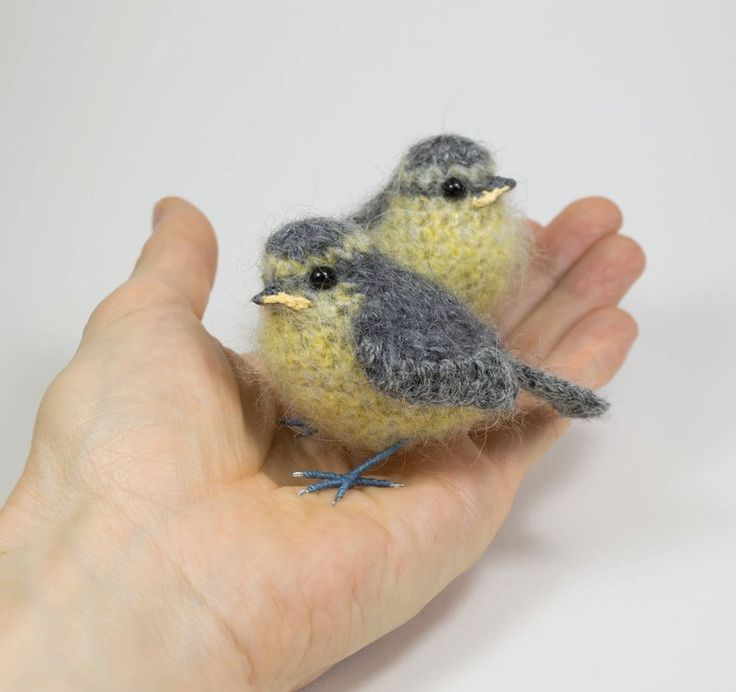 Obviously, she did not distinguish this nest from the nests that were not abandoned, which is exactly what she needs.
Obviously, she did not distinguish this nest from the nests that were not abandoned, which is exactly what she needs.
Further, more than once it was necessary to find cuckoo eggs also in hollows, and, moreover, in such inconvenient ones that a cuckoo chick, due to its large size, could not even get out of them, while other chicks that were in the same nest, excellently got out of the hollow through its narrow opening. Knowing such blunders of cuckoos, one does not have to talk about their special mind.
They say that when laying their egg in someone else's nest, the cuckoo breaks one of the others' eggs, as if to prevent the owners of the nest from noticing her robbery. Whether this happens and whether this is done for such a purpose, it is still impossible to say with certainty. It is known, however, that the cuckoo brings its egg to someone else's nest, carefully holding this egg in its beak.
Often two or three cuckoo eggs are found in the same alien nest. Why is this happening? But because these eggs were brought here by three different cuckoos, who for some reason chose the same alien nest for themselves. It is remarkable that those birds in whose nests the cuckoos lay their eggs do not throw them away. It even happens just the opposite: the cuckoo itself throws out all the eggs of the owner of the nest, leaving only her own. And yet this latter does not act in the same way with the eggs of the cuckoo herself, but takes care of them as if they were her own.
Why is this happening? But because these eggs were brought here by three different cuckoos, who for some reason chose the same alien nest for themselves. It is remarkable that those birds in whose nests the cuckoos lay their eggs do not throw them away. It even happens just the opposite: the cuckoo itself throws out all the eggs of the owner of the nest, leaving only her own. And yet this latter does not act in the same way with the eggs of the cuckoo herself, but takes care of them as if they were her own.
The cuckoo lays a fairly large number of eggs. Egg laying occurs with rather long breaks, over several days, starting in mid-May and continuing until mid-July. As you know, the cuckoo is a rather large bird, and yet, compared with its height, its eggs are very small. This is explained, presumably, by the fact that cuckoos transfer their eggs to other people's nests with the help of their beak. If the cuckoo's egg were very large, of course, the bird could not carry it in this way - then it would have to leave its eggs on the ground, wherever no other bird would incubate them.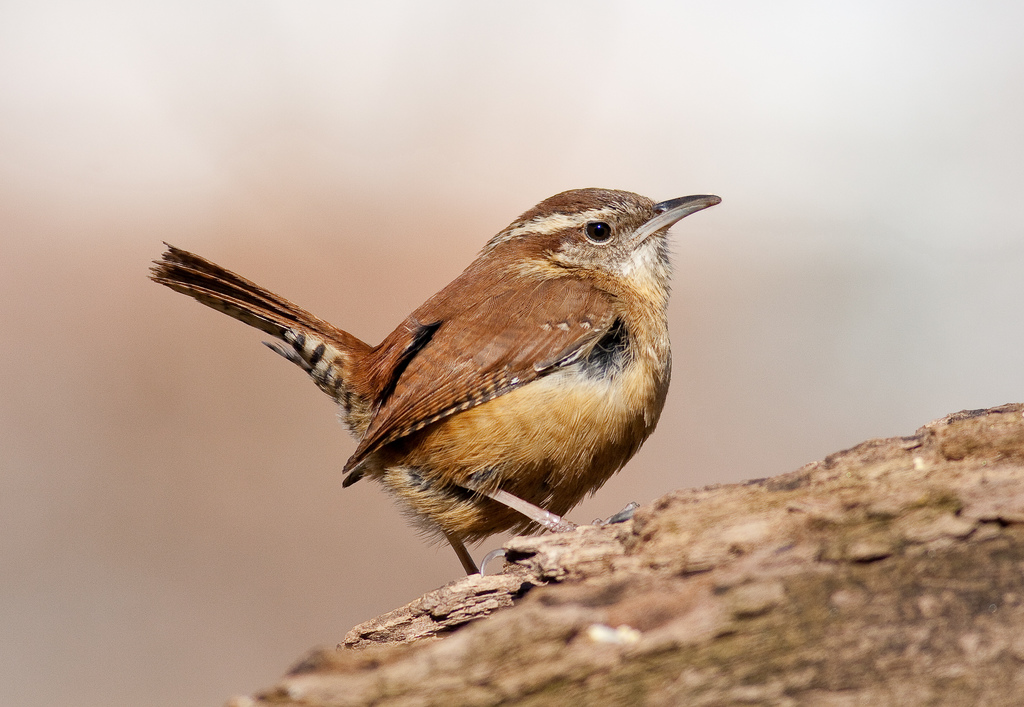 The undoubted benefit of small eggs eventually led to this: over many millennia, the size of cuckoo eggs has changed. These birds began to carry small ones instead of large ones, because it was always easier for cuckoos that lay eggs of somewhat smaller sizes to save their offspring from death - a small egg can be transferred to a longer distance, that is, to find a more suitable nest for it.
The undoubted benefit of small eggs eventually led to this: over many millennia, the size of cuckoo eggs has changed. These birds began to carry small ones instead of large ones, because it was always easier for cuckoos that lay eggs of somewhat smaller sizes to save their offspring from death - a small egg can be transferred to a longer distance, that is, to find a more suitable nest for it.
Some observers say that sometimes cuckoos themselves sit on eggs in other people's nests. This means that among the cuckoos the most common bird custom of sitting on eggs has not yet completely died out. However, such lovers of incubation are still extremely rare among cuckoos.
It has also been observed that some cuckoos feed their chicks, but this is very rare among them.
A chick hatches from a cuckoo's egg - a "blind foundling" with broad shoulders and a concave back. It begins to grow rapidly, becomes strong and large, and, thanks to its growth and strength, as well as awkward movements, eventually begins to displace all other chicks from the nest, which fall out of there and are sometimes killed to death.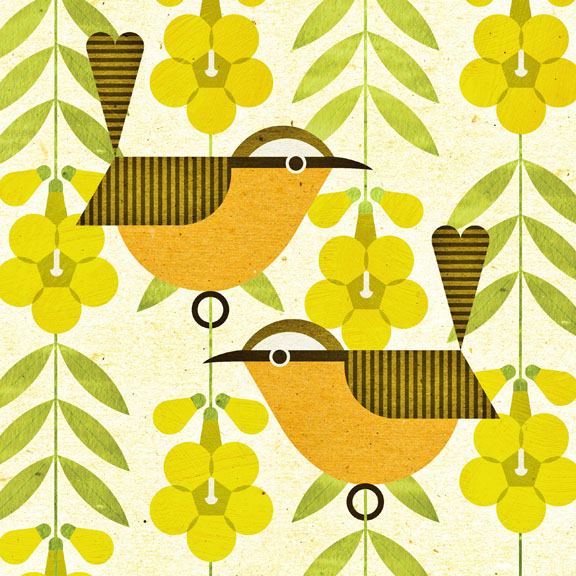 It is said that the little cuckoo commits such a crime maliciously. But her large size and mobility can lead to the same crime and without any evil intentions on her part. Such villainy turns out to be extremely beneficial, both for the cuckoo chick itself and for its entire breed. It saves the chick from starvation, because, growing up quickly, it requires a lot of food for itself. For him, the food brought by his parents would not be enough if all the other cubs had survived. In some breeds of cuckoos, the adoptive parents, the owners of the nest, are so small that they are unable to satisfy the voracity of the young cuckoo. Sometimes you can see that some small birds, for example, barnacles, are diligently gathering food and feeding a young cuckoo, and she is four or five times larger than her foster parents.
It is said that the little cuckoo commits such a crime maliciously. But her large size and mobility can lead to the same crime and without any evil intentions on her part. Such villainy turns out to be extremely beneficial, both for the cuckoo chick itself and for its entire breed. It saves the chick from starvation, because, growing up quickly, it requires a lot of food for itself. For him, the food brought by his parents would not be enough if all the other cubs had survived. In some breeds of cuckoos, the adoptive parents, the owners of the nest, are so small that they are unable to satisfy the voracity of the young cuckoo. Sometimes you can see that some small birds, for example, barnacles, are diligently gathering food and feeding a young cuckoo, and she is four or five times larger than her foster parents.
The cuckoo is not the only bird that has a bad habit of laying its eggs in other people's nests and using other people's labor, just to lay off the unpleasant burden of incubation from its shoulders.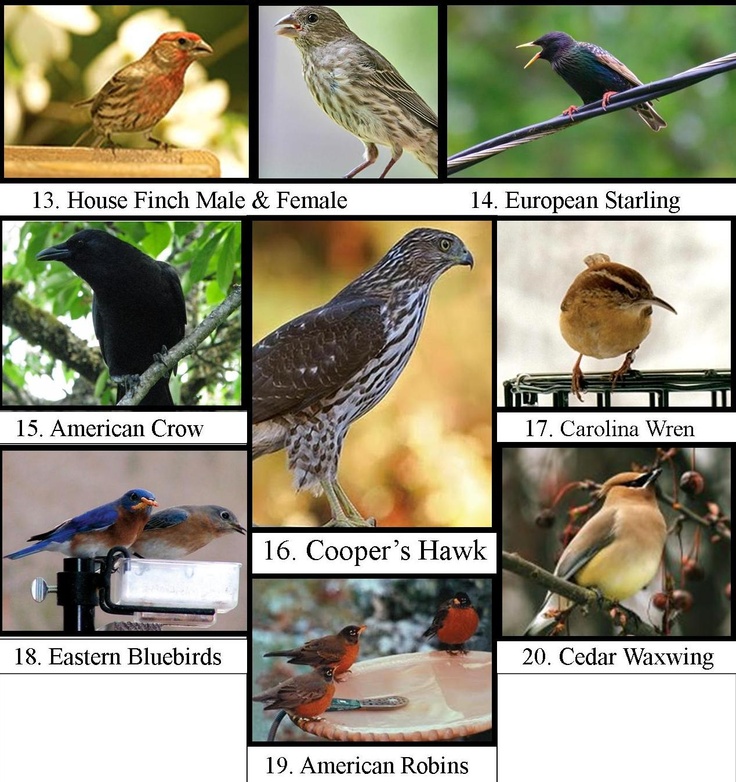 At the other end of the world, in America, there are several breeds of so-called cow starlings, which, like cuckoos, also lay their eggs in other people's nests. Such, for example, is the common North American cow starling, which usually lays 8 to 12 eggs. Both in size and color, these eggs are extremely diverse. The bird sometimes puts four or five of them in the same nest. To make room for their eggs, the cow starling calmly throws those testicles out of the nest that were already there. Sometimes, he does even worse: with his own beak, he pierces the shells of other people's testicles in several places.
At the other end of the world, in America, there are several breeds of so-called cow starlings, which, like cuckoos, also lay their eggs in other people's nests. Such, for example, is the common North American cow starling, which usually lays 8 to 12 eggs. Both in size and color, these eggs are extremely diverse. The bird sometimes puts four or five of them in the same nest. To make room for their eggs, the cow starling calmly throws those testicles out of the nest that were already there. Sometimes, he does even worse: with his own beak, he pierces the shells of other people's testicles in several places.
However, perhaps the cow starling also does this without malicious intent, by accident, and not with its beak, but simply with its paws, which are armed with sharp claws. Becoming them on other people's testicles in order to put their egg in the nest, the cow starling, quite naturally, pierces other people's testicles. This bird does not know how to carry eggs in its beak, as the cuckoo does.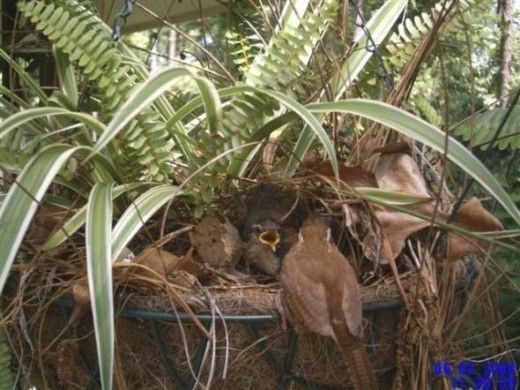 After ten or eleven days, cow starling chicks hatch from the eggs. Usually this happens before the chicks of those birds that have labored to build the nest have hatched from the eggs. Uninvited freeloaders grow extremely fast. After a few days, they throw other chicks out of the nest, or even strangle them. If this does not happen, then these unfortunate chicks have to die of starvation, because the voracious cow starling absorbs all the food that his foster parents manage to bring to the nest. “It is amusing to watch,” says one eyewitness, “how a fat, fully fledged young cow starling follows a pair of chirping sparrows, or robins, constantly demanding food, annoyingly makes its begging sounds and remains calm only when its ever-open beak is filled with at least something anything. It is even more amazing to see how carefully little birds treat their adopted child.
After ten or eleven days, cow starling chicks hatch from the eggs. Usually this happens before the chicks of those birds that have labored to build the nest have hatched from the eggs. Uninvited freeloaders grow extremely fast. After a few days, they throw other chicks out of the nest, or even strangle them. If this does not happen, then these unfortunate chicks have to die of starvation, because the voracious cow starling absorbs all the food that his foster parents manage to bring to the nest. “It is amusing to watch,” says one eyewitness, “how a fat, fully fledged young cow starling follows a pair of chirping sparrows, or robins, constantly demanding food, annoyingly makes its begging sounds and remains calm only when its ever-open beak is filled with at least something anything. It is even more amazing to see how carefully little birds treat their adopted child.
In South America, in Argentina, another species of cow starlings is found. These birds often leave their eggs on the ground, and sometimes they lay them in old abandoned nests, thus exposing their offspring to inevitable death.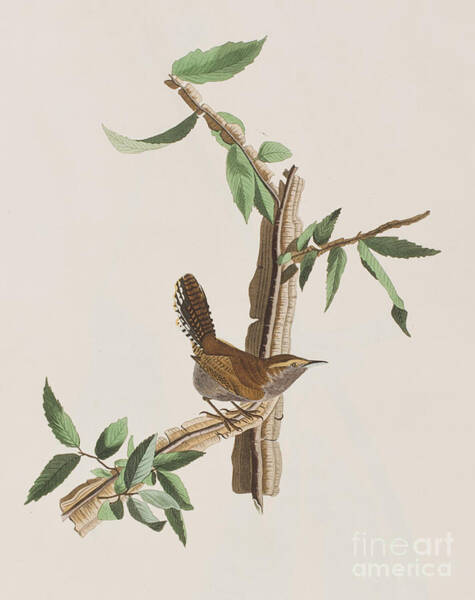 It must be assumed that this was the beginning of the habit of laying eggs in other people's nests in those birds that for some reason stopped incubating themselves. Those who laid their eggs in places where there was no one to incubate them did not give offspring. But those who, at least by chance, began to lay their eggs in nests that have not yet been abandoned, of course, left, thanks to this, offspring after themselves. As a result, for many hundreds of thousands, or even more years, cow starlings, like cuckoos, have developed their well-known habit, which does not in the least prevent the breeds of these birds from living and living in the world.
It must be assumed that this was the beginning of the habit of laying eggs in other people's nests in those birds that for some reason stopped incubating themselves. Those who laid their eggs in places where there was no one to incubate them did not give offspring. But those who, at least by chance, began to lay their eggs in nests that have not yet been abandoned, of course, left, thanks to this, offspring after themselves. As a result, for many hundreds of thousands, or even more years, cow starlings, like cuckoos, have developed their well-known habit, which does not in the least prevent the breeds of these birds from living and living in the world.
Cuckoos and cow starlings, one way or another, still do not do without incubation, although they provide it to birds of other breeds. But there are birds in the world that do without incubation at all, and are content only with heating the eggs, and besides, in a rather strange way.
For example, a very ingenious method of heating eggs occurs in some Australian birds.
Here's the thing.
You probably know that when plant and animal remains decay, these remains heat up, heat develops in them by itself. So, for example, soaked hay, starting to rot, heats up; the leaves that have fallen from the trees are dying; manure thrown out of a barn or stable is warm. Heating is also observed during the decay of corpses. Sometimes the heating that occurs during decay is quite significant.
Some birds use this source of warmth to hatch their chicks.
Of these, first of all, it is necessary to name the Australian Latima or "bush" chicken. It is found in the dense shrub forests of Manning and Clarence. When spring comes, this bird begins to collect various plant substances in a huge pile. Work begins a few weeks before laying. Birds rake with their feet and throw leaves and other plant debris behind them. All the leaves that can be found are put in one pile; there is not a single leaf lying around. Thus, leaves are collected from two to four carts.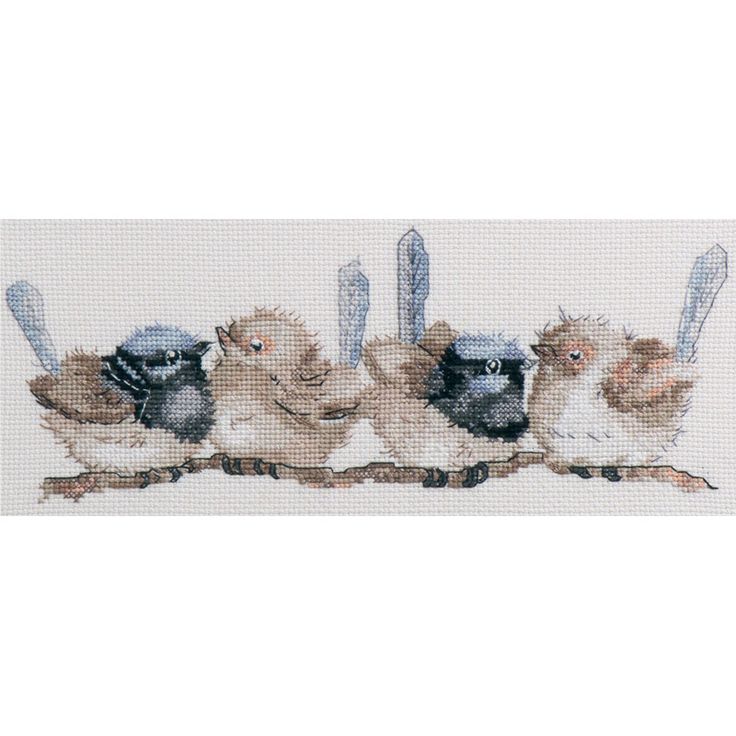 Every year, a new pile is piled on top of last year's pile, and due to the action of dampness and air, rotting begins inside the pile.
Every year, a new pile is piled on top of last year's pile, and due to the action of dampness and air, rotting begins inside the pile.
Then the bird starts laying eggs. She places them in the middle of the pile, in the shape of a circle. Eggs are laid wide end up. New heaps of leaves are thrown on them, and, due to the developing warmth, the development of the embryo begins inside each egg. It goes without any heat.
At this very time, the female keeps constantly somewhere not far from the heap. If any egg is accidentally exposed, the bird buries it again, however, only so much that the air is closed to the egg. The hatched chick remains for twelve hours inside the mound. He himself does not make the slightest effort to get out, and the male even buries him, thereby allowing him to get stronger in warmth.
Maleo, an Australian bird of the same breed, is even simpler. She digs a hole, mostly at the root of a tree or bush. In this hole, going down obliquely, and not straight, the bird lays its egg and throws it with earth.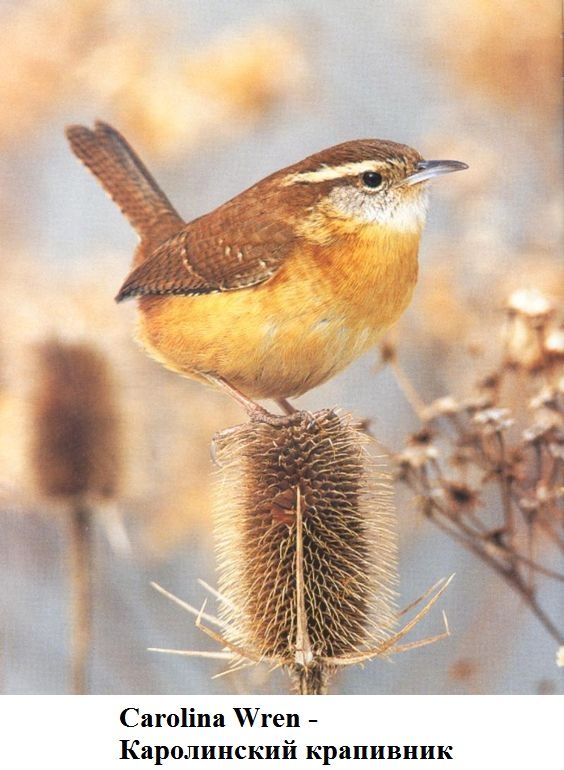 The sun heats the earth, and this heating is quite enough for the development of the embryo to begin. During the day the sun heats the soil, and during the night the soil cools down, but not so much that development stops. In this way the bird leaves the incubation of its egg to the earth and the sun.
The sun heats the earth, and this heating is quite enough for the development of the embryo to begin. During the day the sun heats the soil, and during the night the soil cools down, but not so much that development stops. In this way the bird leaves the incubation of its egg to the earth and the sun.
The big-footed bird does the same thing - a bird found again in Australia and belonging to the same breed. On the seashore, many travelers met mounds made up of sand and shells. At first glance, it is easy to consider them for the graves of some savages, but in fact they are nothing more than bigfoot nests. The eggs are buried by the bird; the sharp end is always directed downwards. And in this case, the heating is provided to the sun.
But there are birds that partly take over the work of heating. During the day, their eggs are heated by the sun, but at night a bird sits on them and, with the help of its body, maintains the warmth they need. The warmth of the sun's rays and the warmth of the bird's body alternately do the same thing.
Such birds include, for example, the ostrich.
Everyone knows this great African runner, whose feathers are held in such esteem. He lives in North Africa, from the southern slopes of the Atlas to the Nile; It is also found in South Africa. This bird loves desert and steppe places, in which fertile lowlands come across in some places.
The structure of the body of an ostrich is such that it is not able to fly, but it can run extremely fast.
The mental abilities of an ostrich are very poorly developed. So, for example, having an irresistible tendency to peck at everything that comes into its eyes, the ostrich is completely incapable of sorting out whether what has fallen into its beak is edible or inedible, and calmly sends everything that comes into its stomach. Bram relates that one set of keys traveled several times through the stomach and intestines of the ostrich, was then thrown out along with the remnants of food, and then swallowed again as something edible. Bershon found about ten pounds of various things in the ostrich's stomach: sand, brushwood, rags, three pieces of iron, nine English coins, a copper hinge, two iron keys, seventeen copper and twenty iron nails, lead bullets, buttons, bells, flints, etc. d.
Bershon found about ten pounds of various things in the ostrich's stomach: sand, brushwood, rags, three pieces of iron, nine English coins, a copper hinge, two iron keys, seventeen copper and twenty iron nails, lead bullets, buttons, bells, flints, etc. d.
All this speaks in favor of appetite, but not in favor of the mind of this bird.
The ostrich nest is extremely simple. It uses its two-toed, strong legs to make a round depression in the clay soil. The dimensions of the recess are such that it can just be covered with the body. Around the nest, the bird throws something like a shaft, against which the eggs lying in the nest rest. In order to fit as many of these latter as possible, the bird puts them on the tips.
It is interesting that not one, but several females lay eggs in the same nest, while care for the eggs is left not to the female, but to the male.
There are quite a significant number of eggs in the nest - up to sixteen. During the day, heating is produced by the rays of the sun; the bird moves away from its nest for hours.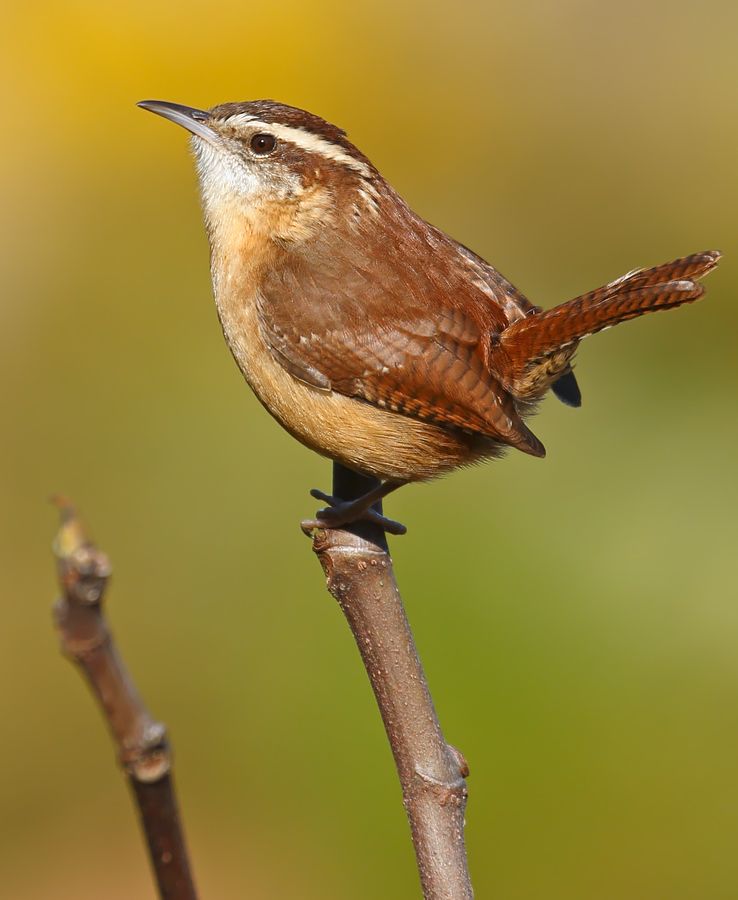 At night, the male sits on the nest and continues heating with the warmth of his body.
At night, the male sits on the nest and continues heating with the warmth of his body.
It falls to the lot of the male not only to heat the eggs, but also to protect them from the attacks of jackals and wild cats. These predators are big fans of ostrich eggs.
With the help of its thick powerful legs, the ostrich performs extremely successful defense: often dead predators were found near the nest.
Incubation lasts about six weeks. After that, small ostriches come out of the eggs. These are extremely amusing creatures, more like a hedgehog than a bird. Their body is covered with feathers, very reminiscent of needles. The ostrich loves his children extremely and protects them with all his might.
There are quite numerous breeds of birds that literally do not make any nests for themselves, but lay their eggs directly on the ground, even without special protection. For example, the king heron is content with a small depression, which is not difficult to find on the shore.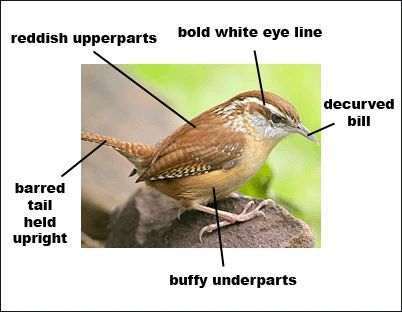 The nests of sandpipers and sandgrouse are simply a depression in the ground, found and dug by the bird itself. The silky swallow finds the same depressions... on the horizontal branches of trees! This recess serves as her nest, of course, extremely inconvenient, even dangerous for the life of chicks, which often die falling to the ground. The condor lays two large whitish-yellow eggs with brown spots directly on the bare ground. Common terns lay their eggs on the sand of the shore, and in doing so so imprudently that the first flood kills many thousands of eggs.
The nests of sandpipers and sandgrouse are simply a depression in the ground, found and dug by the bird itself. The silky swallow finds the same depressions... on the horizontal branches of trees! This recess serves as her nest, of course, extremely inconvenient, even dangerous for the life of chicks, which often die falling to the ground. The condor lays two large whitish-yellow eggs with brown spots directly on the bare ground. Common terns lay their eggs on the sand of the shore, and in doing so so imprudently that the first flood kills many thousands of eggs.
You probably know the "crocodile watchman" - a friend of the Nile monster. This bird calmly walks along the crocodile's back and even climbs into its open mouth, which it cleans from any annoying parasites. She also warns the crocodile at the moment of danger, the crocodile watchman also does not make any nest for himself, but lays eggs directly on the sand. And despite this, finding a bird's nest is extremely difficult. “For a long time,” says Bram, “I watched through a telescope for a couple, of which one bird sat on the sand, and the other, as usual, ran back and forth. Suspecting that the sitting one was busy incubating eggs, I took a good look at the place and began to slowly approach it. To my considerable surprise, the sitting bird allowed me a hundred paces, then cautiously got up from its place, hurriedly dug in the sand and ran to another, together with which it departed, apparently completely indifferent. Arriving at the very place, at first I could not find anything, and finally, rather by chance than as a result of searching, I noticed a small unevenness in the sand, began to dig it, and two eggs completely covered with sand fell into my hands. If mother had had more time, she would in all likelihood have buried them so deep that I positively would not have been able to notice them.
“For a long time,” says Bram, “I watched through a telescope for a couple, of which one bird sat on the sand, and the other, as usual, ran back and forth. Suspecting that the sitting one was busy incubating eggs, I took a good look at the place and began to slowly approach it. To my considerable surprise, the sitting bird allowed me a hundred paces, then cautiously got up from its place, hurriedly dug in the sand and ran to another, together with which it departed, apparently completely indifferent. Arriving at the very place, at first I could not find anything, and finally, rather by chance than as a result of searching, I noticed a small unevenness in the sand, began to dig it, and two eggs completely covered with sand fell into my hands. If mother had had more time, she would in all likelihood have buried them so deep that I positively would not have been able to notice them.
There are birds that, although they do not make nests for themselves, still live in nests - but only not in their own, but in others. There are many bird buildings in the forest, both inhabited and abandoned. Both of them can be suitable for housing chicks of various breeds. You can settle in the abandoned ones without asking anyone's permission, and from the inhabited ones, a bird guided by the principle “power is higher than right” can expel their owners.
There are many bird buildings in the forest, both inhabited and abandoned. Both of them can be suitable for housing chicks of various breeds. You can settle in the abandoned ones without asking anyone's permission, and from the inhabited ones, a bird guided by the principle “power is higher than right” can expel their owners.
And in the bird world, as in the human world, the product of labor does not always belong to the working people themselves.
In the world of birds, there is also the seizure of someone else's immovable property, more precisely, the seizure of the works of someone else's labor, because only what is produced by labor should be called property, and, of course, this should belong only to the person who produced it.
But not all birds accept this fair rule. So, for example, the well-known falcon does not always build a dwelling for itself, and sometimes takes it away from the magpie. This latter, of course, does not give it up voluntarily, and a real fight breaks out from behind the nest, sometimes very cruel.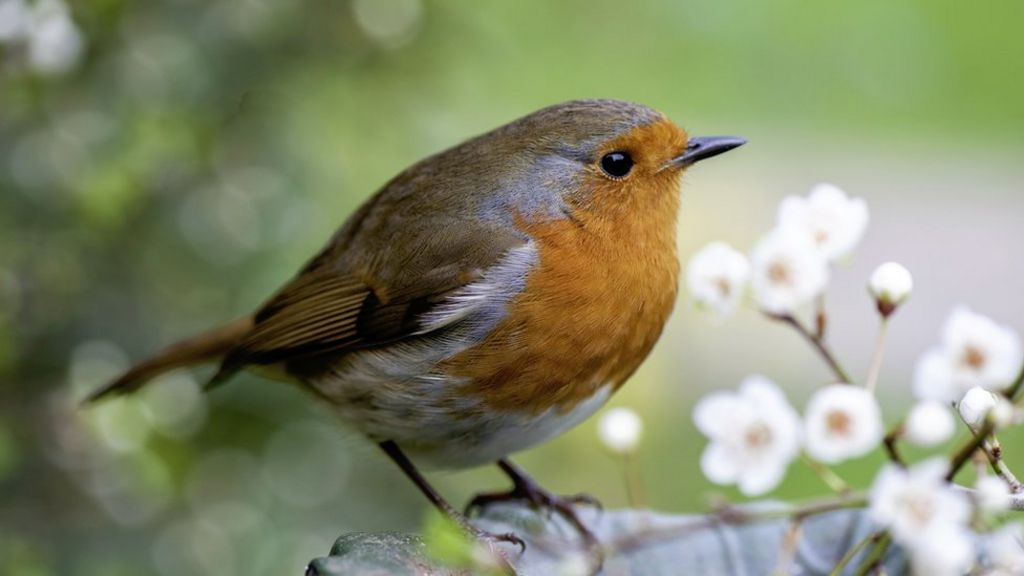 They even say that the red-footed falcons often call for help from other birds of their own species.
They even say that the red-footed falcons often call for help from other birds of their own species.
Predation is not limited to birds of prey. Killer whales, if they find someone else's nest that suits their taste, kick out the real owners without ceremony and settle in the nest themselves. Hatchet, a funny little sea bird that lives in the northern countries, is in the habit of dwelling underground, but is not in the habit of digging a hole always by its own labor. She looks for ready-made holes of pied. Pied does not allow to seize its possessions without resistance, and therefore the bird and the animal enter into a fierce battle to resolve the dispute. Almost always the hatchet wins.
The rabbit owl behaves similarly with prairie dogs, with the only difference that it does not drive out, but ... devours the real owners of the nest!
Our sparrow is also not without sin in predation of this kind. It often occupies the nests of swallows, even when there are not only eggs, but also chicks.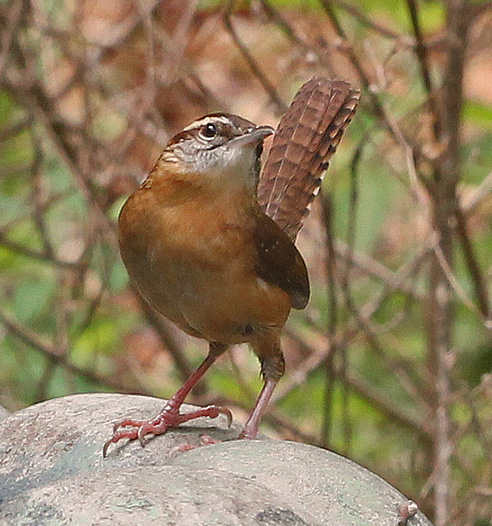 The sparrow kills the chicks in the most predatory way in front of the mother, throws them out and calmly settles in the new room.
The sparrow kills the chicks in the most predatory way in front of the mother, throws them out and calmly settles in the new room.
Even more often this bird settles in other people's abandoned nests. In this case, she is far from picky; she is satisfied with the birdhouse, and the lower part of the stork's nest, and the nest of swallows. In general, in the bird world it often happens that a bird saves itself from the labor of construction by settling in someone else's abandoned nest. At the same time, the nest is slightly corrected and adapted to the mores and habits of the new tenant.
Falcons, Hobbies, ibis and many other birds do this. Carolina ducks in March begin to look for a place to nest. Both male and female fly together through the forest and explore every hole in the tree bark. The female explores inside, while the male sits alert outside, gently calling to her and warning her with a cry of approaching danger. The nest of the royal woodpecker, which is always located in a hollow, is especially preferred by these ducks. Having found it, the ducks arrange the inside of the hollow to their liking and settle in it for many years, on occasion bravely protecting it from their other relatives.
Having found it, the ducks arrange the inside of the hollow to their liking and settle in it for many years, on occasion bravely protecting it from their other relatives.
If the ducks fail to find the nest of the royal woodpecker, then they are content with the abandoned nest of the squirrel.
The nest of this animal is loved by many birds, for example, the wood pigeon, which only flattens it from above and lays it with several twigs.
Birds use the abandoned nest not only of other birds and mammals, but even insect nests. So, in Australia there is a rather large bird from the light-beaked order, the so-called "blue alcyone". The British call it the amusing nickname "Vanka-laughter", because the cry of this bird really looks like laughter. Alcyone tends to settle, among other things, in the nests of wood ants.
Like the Alcyone, the Brazilian surucua bird arrives. She digs a hole for herself in termite nests that are located on trees. “I saw,” says one traveler, “a male surukua, who, clinging to the wall of the nest like a woodpecker, tried to poke a hole with his beak, while the female sat quietly on a nearby tree and, apparently, encouraged the male with her glances.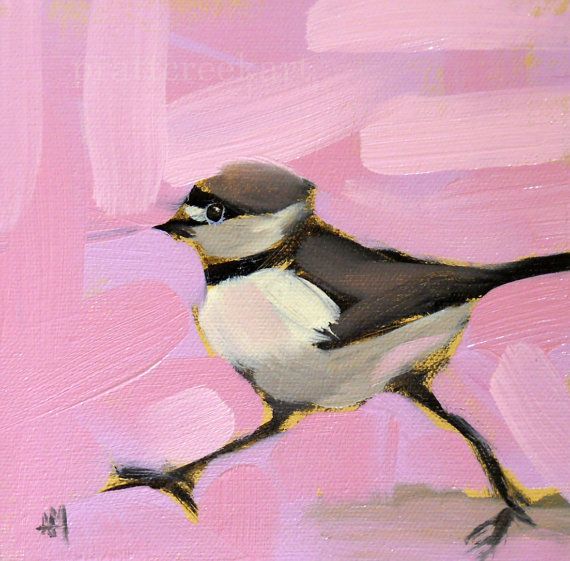 ”
”
Some birds, instead of constructing any buildings, use ready-made shelters, which nature itself provides them with in abundance.
Various depressions in the rocks and hollows of trees are very convenient dwellings for birds. No wonder that because of them even the fight between birds rises. For example, in old towers, old trees, and similar places, jackdaws try to force out owls.
Of the birds nesting in hollows, without a doubt, the most interesting bird is the rhinoceros. This is an extremely ugly and strange creature, the image of which you have probably already seen. The most remarkable thing about her is her large head, equipped with a huge heavy beak. On the beak there is a special red-colored growth, thanks to which the bird got the name of the rhinoceros. The beak of a bird is such a terrible weapon that even predators are afraid of.
Hornbill is found in the mountainous forests of India, from the extreme south to the Himalayas and from the Malabar coast to Assam and Malacca. The method of reproduction of this bird is extremely characteristic. The female rhinoceros finds a suitable hollow and lays five or six eggs there.
The method of reproduction of this bird is extremely characteristic. The female rhinoceros finds a suitable hollow and lays five or six eggs there.
As soon as the eggs are laid and the female sits on them, the male gets to work. He flies, collecting small lumps of clay in his beak, and, blinding them with his saliva, immures the female in a hollow.
However, he does not wall it up completely, but leaves a small hole into which the female sitting on the eggs can only stick her beak.
The female remains in this position during the entire period of incubation. The male also has a lot of work to do: he must feed the female. And the rhinoceros diligently flies for berries and fruits and passes them to the female.
“February 16, 1858,” says Tikel, “I learned from a resident of the village of Karen that nearby a large rhinoceros was nesting in a hollow tree. Going there at once, I noticed that the hollow was located in the trunk of an almost straight tree, and was walled up with a thick layer of clay, with the exception of a small hole through which the female could stick her beak in order to take food from the male. One of the villagers with great difficulty climbed up the tree, driving bamboo wedges into it, and then began to clear the clay. The male that arrived at that time uttered loud hoarse cries, flew from side to side and finally flew up very close to us. The natives, apparently, were afraid of him, expecting that he would certainly attack us, and I managed with difficulty to keep them from killing the male. When the hollow was sufficiently open, the native thrust his hand into it, but was so cruelly bitten by the female that he nearly fell out of the tree. It was only by wrapping rags around his hand that he managed to pull out the bird, an extremely miserable creature, disgusting and dirty. Having lowered the bird down, they put it on the ground, where it jumped around and threatened with its beak approaching it. Finally she climbed a small tree, where she sat down; she could not put her wings to work in order to fly, because her limbs were too stiff from a long sitting in the hollow. In the depths of the hollow, one dirty light brownish egg lay on a bed of rotten wood, bark and feathers.
One of the villagers with great difficulty climbed up the tree, driving bamboo wedges into it, and then began to clear the clay. The male that arrived at that time uttered loud hoarse cries, flew from side to side and finally flew up very close to us. The natives, apparently, were afraid of him, expecting that he would certainly attack us, and I managed with difficulty to keep them from killing the male. When the hollow was sufficiently open, the native thrust his hand into it, but was so cruelly bitten by the female that he nearly fell out of the tree. It was only by wrapping rags around his hand that he managed to pull out the bird, an extremely miserable creature, disgusting and dirty. Having lowered the bird down, they put it on the ground, where it jumped around and threatened with its beak approaching it. Finally she climbed a small tree, where she sat down; she could not put her wings to work in order to fly, because her limbs were too stiff from a long sitting in the hollow. In the depths of the hollow, one dirty light brownish egg lay on a bed of rotten wood, bark and feathers. In addition, the hollow was filled with a huge amount of rotting berries.
In addition, the hollow was filled with a huge amount of rotting berries.
Such a wonderful way of incubation, in which the nest turns into a prison, is apparently explained by the following circumstance.
While incubating, the female loses most of her tail and flight feathers. Due to this loss, she is no longer able to fly. If the bird fell from the nest, then it could not fall into it again. By immuring the female in a hollow, the male thus protects her from falling out of the nest.
The ability to fly appears in her again only at the time of the hatching of the young.
Our woodpecker also arranges his nests in a hollow, with the only difference being that the hollow in which he settles, in most cases, is his own. The bird looks for trees that are already damaged, with a rotten core, and with the help of its beak begins work. By the way, we note that the bird's beak is not strong enough to peck healthy trees, and accusing woodpeckers of damaging the forest is completely vain and illegal.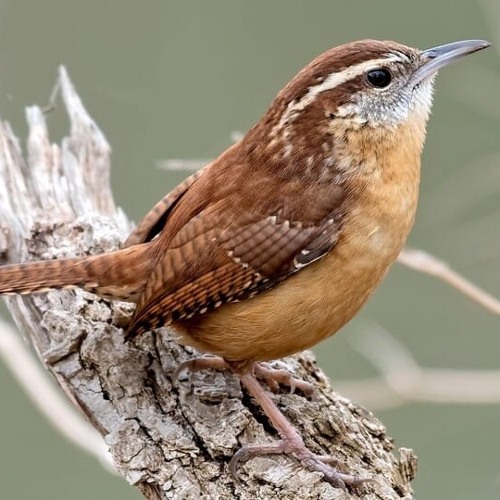
The entrance to the woodpecker's nest is inclined. It opens into a relatively wide vertical closet, at the bottom of which the testicles lie.
Both the male and the female work equally on chiselling such a nest, from morning to evening, replacing each other at different intervals.
No matter how hidden the nest of the woodpecker is, in America it is not safe from the attack of the black snake, which devours both eggs and cubs.
Birds nesting in hollows are in danger not only from external enemies, but also from the side of the tree itself. The fact is that the plant lives, feeds, grows. Everyone knows how quickly the bark grows on the injured areas of the trunk and branches. It happens that the bark grows so much over the hole leading to the nest that it closes the passage to it. The nest is thus buried in the cavity of the tree, as if in a grave.
Caves, depressions in rocks, ruins of castles and other buildings also serve as ready-made dwellings for many birds.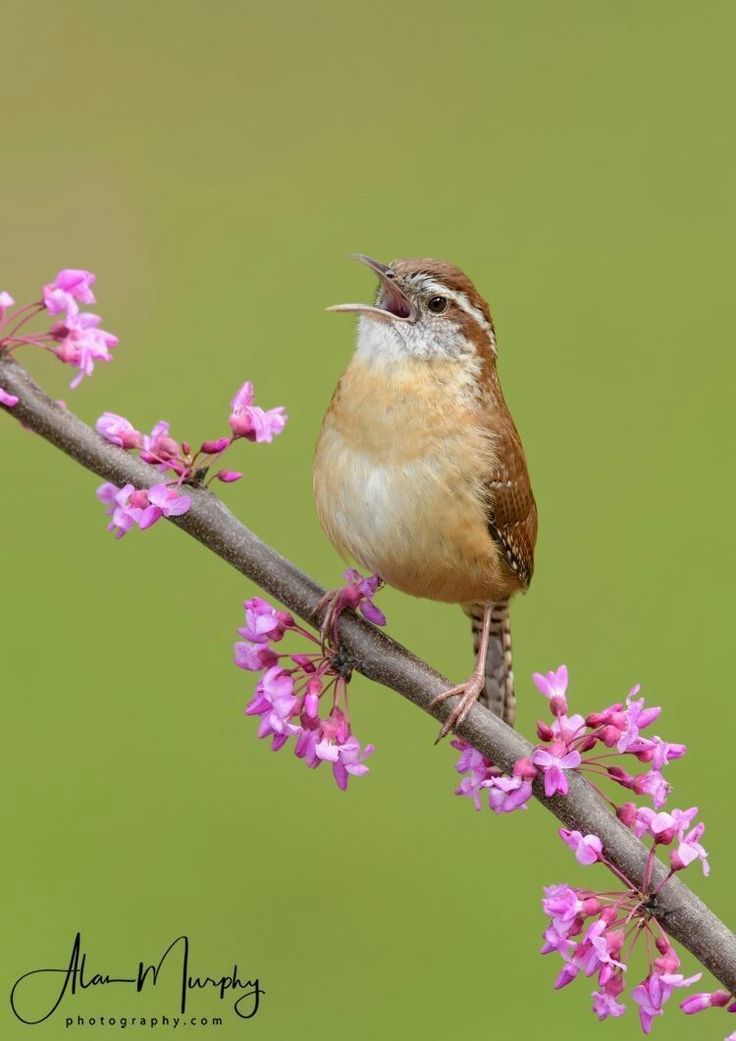 They are mainly used by nocturnal birds - owls, owls, barn owls. Other birds dig their own nests in the ground.
They are mainly used by nocturnal birds - owls, owls, barn owls. Other birds dig their own nests in the ground.
Nests dug in the ground are not exposed to the same danger as those built in hollows. Among the birds there are extremely skillful miners, or diggers.
A small American cave nuthatch is tearing out a narrow cylindrical corridor. This corridor is made in solid sandy soil, so you involuntarily wonder at the strength and skill of this little bird. The cave nuthatch is so unintelligible that sometimes it begins to make its corridor in the clay wall with which the native inhabitants surround their gardens and houses. These walls in many places seem to be drilled with round holes.
Everyone knows a pretty little swift bird. Not many, seeing her beak, would think that she is able to break through passages in significantly hard sandstone. And meanwhile it is. Swift digs holes in such sandstone that resists even the sharpest knife.
Flying along the surrounding cliffs and sandstone rocks, the swift finds a suitable place, tests the hardness of the sandstone with its beak, and gets to work. He begins to work in circles, using his legs as a pivot; while spinning all around and around, he works with his beak and eventually digs a fairly regular round hole. The fossa reaches up to two and a half feet in length and goes a little upward. There is a small extension at the end.
He begins to work in circles, using his legs as a pivot; while spinning all around and around, he works with his beak and eventually digs a fairly regular round hole. The fossa reaches up to two and a half feet in length and goes a little upward. There is a small extension at the end.
If a stone or a tree root is encountered on the way, then the swift leaves the started mink and is taken to make a new one.
These birds usually settle in societies, and their nesting places are pierced with a mass of holes. So, behind Oranienbaum, near the village of Malyye Izhora, in a clay cliff, a whole underground town was dug by swifts.
The nest of a flightless (one of the penguins) can be called the most interesting and wonderful nest that birds pull out.
Nelet, like all penguins, is an extremely clumsy creature. But, despite its clumsiness, it is a very dexterous and agile bird. The sea is the element of flightless. They swim so fast that the fastest ship can't keep up with them. Birds usually swim in groups. The whole herd is in continuous and varied movement: now one bird, then another dives into the depths, dives remarkably deep, shows itself in front and tries to catch up with the rest of its comrades. Swimming in this way, they catch various fish, which make up their food.
Birds usually swim in groups. The whole herd is in continuous and varied movement: now one bird, then another dives into the depths, dives remarkably deep, shows itself in front and tries to catch up with the rest of its comrades. Swimming in this way, they catch various fish, which make up their food.
On land, non-flyers also move, in case of danger, with extreme dexterity; but their ordinary gait is very amusing. The device of the legs makes them walk upright; they take very small steps and, moving one foot after the other, constantly turn now to the right, then to the left around their vertical axis. But, in case of danger, they rush to the chest and glide over the sand with the help of their short wings and wide paws extremely quickly.
Neletes live in societies of several tens of thousands of birds. “Birds on the ground,” says one observer, “are arranged in order, like a regiment of soldiers, and not only in rows, but also in age: young are in one place, molting in another, incubating females in a third, non-hatching - in the fourth.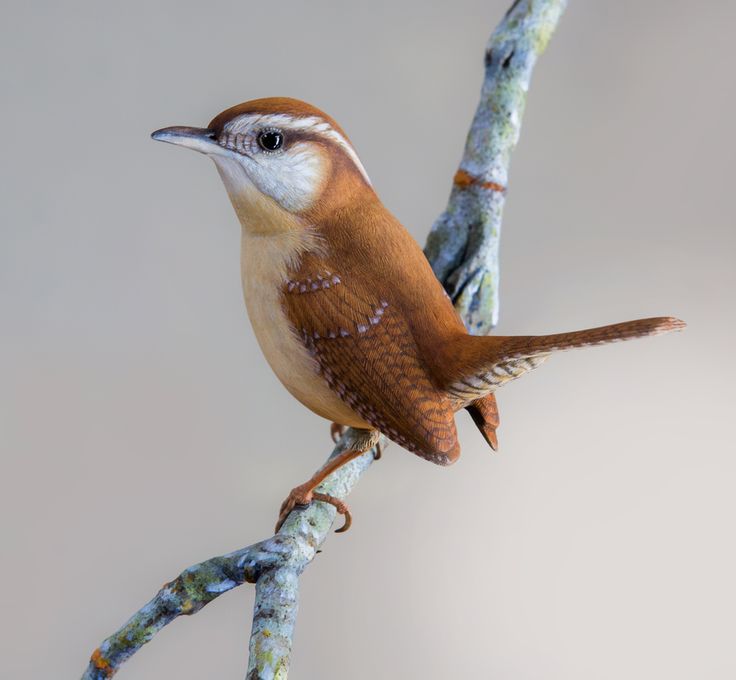 This distribution is so strictly maintained that any bird that does not belong to a known order will not be accepted there.
This distribution is so strictly maintained that any bird that does not belong to a known order will not be accepted there.
Nelet, despite his clumsiness, digs wonderful nests. During breeding, he tramples down straight paths through the grass from the water itself, which are so smooth and clean as if they were arranged by man. These paths run on level ground and intersect almost at right angles. The whole area is thus divided into more or less regular quadrangles. Each quadrangle serves as a nesting place for one pair of birds. Nelet digs a hole two or three feet deep; the pit goes a little awry, so that something like a small stove is formed. A fairly wide, but very low entrance leads into it.
Inside, the nest communicates with the neighboring nest by means of a special underground passage, so that, as Bram notes, "birds can visit each other underground."
Thus, the nesting of non-flyers is represented by a whole town in which streets are laid, that is, paths.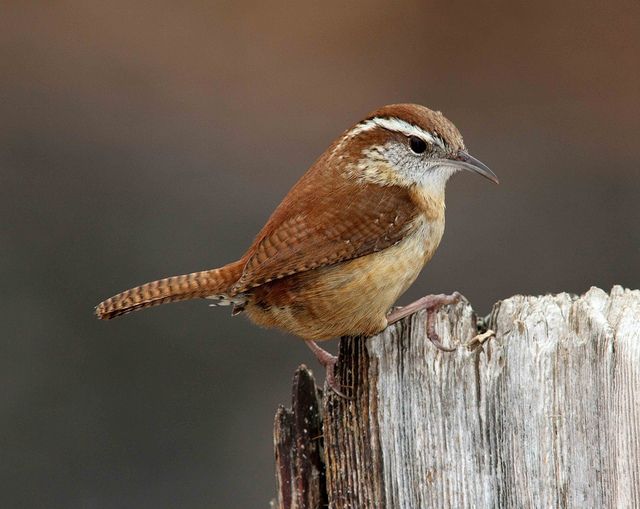 Around the town are the same paths. The order in the town is wonderful. In each nest, a female and a male are placed side by side. As soon as the female leaves the nest, this latter sits on the eggs and continues to incubate. This is necessary because non-flyers quite shamelessly steal each other's eggs. In some non-flying species, stronger birds take eggs from weak ones. They even found nestlings belonging to two different non-flying species in the same nest.
Around the town are the same paths. The order in the town is wonderful. In each nest, a female and a male are placed side by side. As soon as the female leaves the nest, this latter sits on the eggs and continues to incubate. This is necessary because non-flyers quite shamelessly steal each other's eggs. In some non-flying species, stronger birds take eggs from weak ones. They even found nestlings belonging to two different non-flying species in the same nest.
To finish our discussion about birds digging their nests, I will tell you about one very small Australian bird. It is called, because of its colorful, brilliant plumage, the diamond bird.
This extremely lively and beautiful creature is only three and a half inches long. Despite its small size, the bird digs a corridor for itself on steep cliffs or on flat ground. The end of the corridor widens, and here the bird begins to build its nest. Despite the fact that she has to work in the dark, the diamond bird makes a very beautiful and well-built nest for itself.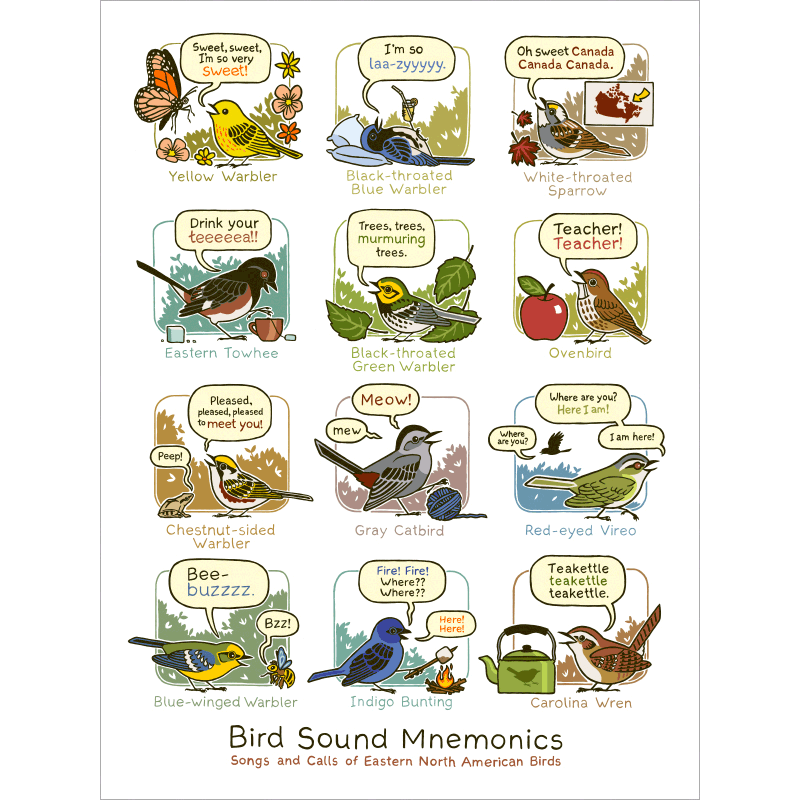 To do this, she uses almost exclusively strips of the inner bark of gum trees. The nest has the shape of a ball.
To do this, she uses almost exclusively strips of the inner bark of gum trees. The nest has the shape of a ball.
The diamond bird is the only burrowing bird that both digs and builds its nest. For all the rest, eggs are laid either directly on the ground, or on some rather rough bedding.
In the world of birds, as well as between human tribes, there are both bad and good builders. All human buildings, from the simple hut of an Australian to the palace of the Venetian Doge, could be arranged, according to the skill of the builders, in one row, and arranged in such a way that the transition from the buildings of the most skillful to the most unskillful would be imperceptible. The simplest dwelling is a cave, a hollow, a crevice or a canopy of a rock, or the green vaults of a forest. This is how some Papuans live; so lived the now extinct Tasmanians. A little more cunning and skillful is that savage who is not satisfied with the tree booth, but cuts down the branches and makes an artificial canopy out of them. Even more cunning is the one that weaves the cut branches and makes a wicker hut out of them, as we see among many Negro tribes. Further, there are wicker huts plastered with clay. From here, one step to buildings made of bricks, in the sort of Moroccan houses or ancient Assyrian structures. The history of art shows us the continuous progress of improvements in architecture. Brick is replaced by marble, or goes into action next to it and granite, and we see transitional forms from a simple stone house to a luxurious marble palace or cathedral at every step. Of course, from a bird's nest to some kind of palace is a considerable distance. But not so far from the wicker hut of some Papuan to the bird's nest...
Even more cunning is the one that weaves the cut branches and makes a wicker hut out of them, as we see among many Negro tribes. Further, there are wicker huts plastered with clay. From here, one step to buildings made of bricks, in the sort of Moroccan houses or ancient Assyrian structures. The history of art shows us the continuous progress of improvements in architecture. Brick is replaced by marble, or goes into action next to it and granite, and we see transitional forms from a simple stone house to a luxurious marble palace or cathedral at every step. Of course, from a bird's nest to some kind of palace is a considerable distance. But not so far from the wicker hut of some Papuan to the bird's nest...
The study of simple buildings makes it clear to us why complex buildings exist. They became complex only little by little, over a very long period of time, many tens of thousands of years. Their complication proceeded by trifles, trifles were added to trifles, and in the end, very large changes accumulated from the most insignificant trifles.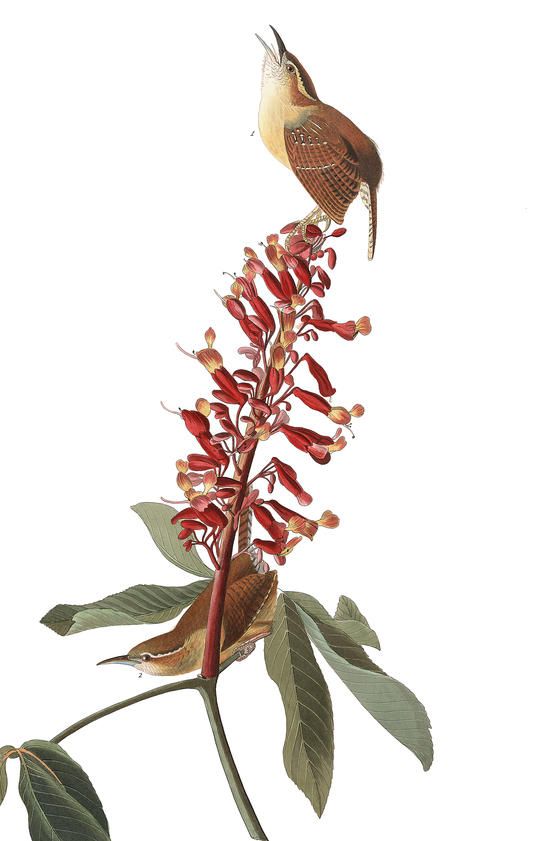
The same thing happened in the world of birds. There is an imperceptible transition, beginning with the remarkable building of the weaver bird and ending with an ordinary hole or depression in which some bird lays its egg, which does not make a nest at all.
To another, of course, at first glance it seems wonderful and incomprehensible how a bird could immediately, with its mind, reach such a wonderful building. But nothing happens in the world all at once; what seems to be done all at once is in fact prepared by a whole series of trifles that have been accumulated for a long time. Everything changes gradually, little by little, and the barely noticeable changes do not seem to us either miraculous or incredible. Every such change always has its cause, which we can find by study and reflection; these changes take place only under certain conditions, which can be more or less accurately and scientifically ascertained and determined. The reason for the changes, as already mentioned, lies in the environment where the bird lives, and in the bird itself, in the structure of its body and its spiritual life, and finally, in the history of the entire organic world.
Of course, one cannot imagine the spiritual life of a bird to be exactly the same as, for example, the spiritual life of a man. The bird does not have human thoughts, feelings and desires, but there are other, simpler phenomena of spiritual life. Although they are homogeneous with human ones in essence, many human explanations are still not always applicable to them. A bird thinks and takes into account many things when it builds its nest. But we have no right to say that at the same time she reasons in the same way as a person. According to its structure, the head of a bird cannot even contain the same large stock of knowledge acquired from its relatives and taken out from its own experiments and observations that the head of a person can accommodate. Our considerations, reasoning, weighing have no place in a bird's head. The bird, during its activity, does not give itself such an account as we give ourselves. She follows the track that has been laid by a long series of generations, and acts as she has received from other birds of her own breed by imitation, or inherited, along with such and such a body structure.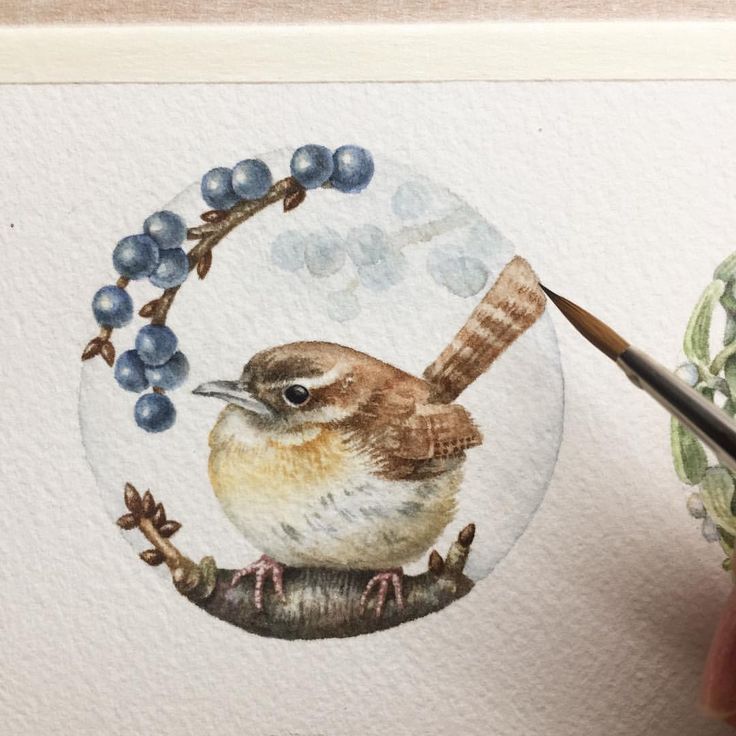 Even in the most important moments of his life, the bird does not stray from this rut.
Even in the most important moments of his life, the bird does not stray from this rut.
This unaccountable, more or less unconscious "bird" activity has been partially preserved among people, but only in small details. Remember that you and every other person are not aware of the millions of different petty actions that you perform without being guided by anything, and acting unconsciously or semi-consciously, according to a pattern worked out in advance, and moreover, not worked out by you yourself.. .
This is approximately how one should look at a bird's "ability" to build wonderful nests.
We have seen that many birds do not build their nests at all, but lay their eggs directly on the bare ground.
The first step forward in building art is represented by those birds that make even a small hole in the ground for eggs. Nevertheless, this hole is a work aimed at the implementation of some idea. Farther than these birds have gone are those who choose such places for making their holes where they can make a hole not in the sand, but in the grass, and rake the grass into a heap. Even further in the art of building have gone those birds that purposely make egg bedding, and for this they collect all the materials necessary for it from different places. Bedding can be rotten wood, moss, fluff, etc.
Even further in the art of building have gone those birds that purposely make egg bedding, and for this they collect all the materials necessary for it from different places. Bedding can be rotten wood, moss, fluff, etc.
Even further gone are those birds that collect materials for bedding not somehow, but in a certain way - for example, they put coarser materials down, and on top of these those that are softer. But the nests of such birds, in fact, are not yet nests, but simply a crushed, compressed mass of soft materials.
So, our lark makes its nest right on the ground. This nest may serve as a type of nest genus just described.
But materials can be compacted in many different ways. Poorly cohesive materials can only lie on the ground - they can be blown away by the wind. To prevent this from happening, it is necessary to attach it to something - to a stone, to a bush, to a tree, to a tree branch. But in order for the nest to come out dense and strong, and so that it can hang on a tree, these materials need to be mixed up and twisted so that the nest is a single whole - a real building.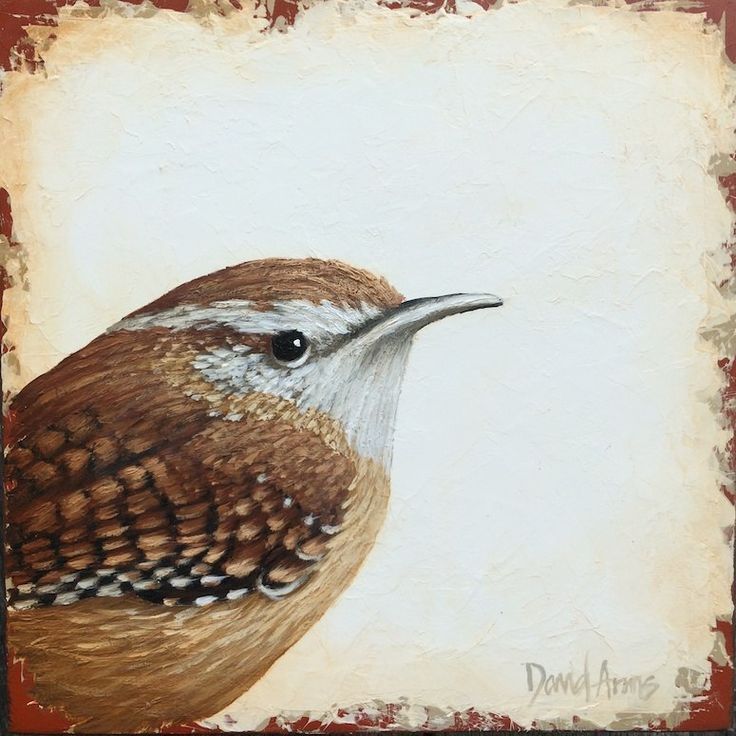
Thus, looking over all the bird buildings with one general glance, we imperceptibly pass from the birds that build on the ground to the birds that build nests on the branches.
We do not need to list all the bird buildings. We hope that the meaning and significance of avian art have become sufficiently clear to the reader from the foregoing.
← Art in the world of birds↑ Notes of a Naturalist Building a nest →
Species of birds - description, characteristics and care for them
A
Australian Avocet
This unusual bird belongs to the category of those with exotic beaks. They not only add originality to the appearance of birds, but also greatly facilitate the process ...
Australian Golden Bowerbird
This bird is attractive, first of all, with its plumage. Representatives of a large family of bowerbirds differ from their feathered counterparts in the manner of building a nest, which is not in vain ...
Australian ibis
This bird of the stork order is original and quite cute.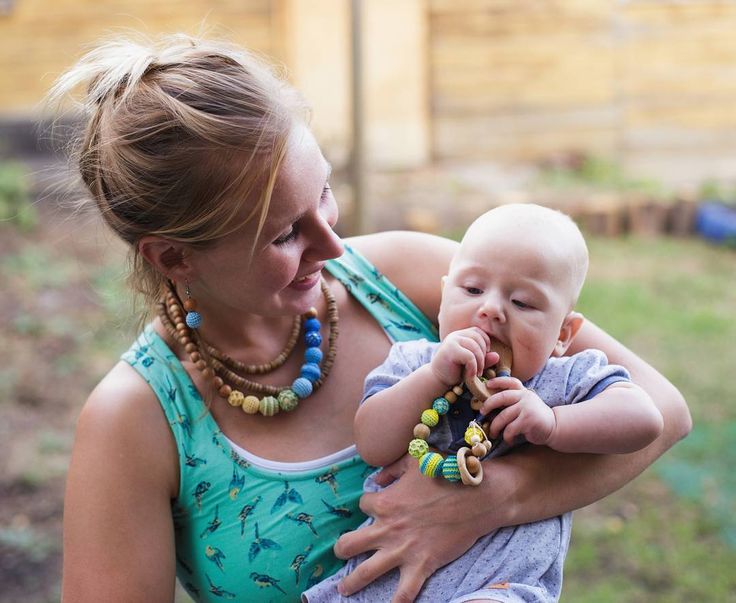 Not much is known about it, since a characteristic feature of the Australian ibis is shyness....
Not much is known about it, since a characteristic feature of the Australian ibis is shyness....
Asiatic yabiru
The flight of this bird is a breathtaking sight, especially its takeoff. The Asian jabiru makes such breathtaking turns in the air that the observer is simply breathless ...
Alexandrian parrot
These birds have always been popular pets. As for the Alexandrian parrot, its advantage over other brethren is that it can talk ....
Diamond Pheasant
Like all exotic creatures, this feathered species is amazingly beautiful. The diamond pheasant is also called Lady Amherst's pheasant. The bird got its second name in honor of the countess…
Albatrosses
This is a strong bird that can fly up to 1000 kilometers a day. Her home is the ocean surface. Albatrosses can not see land for weeks and spend time above sea water....
American Avocet
These birds are considered the most beautiful and original in North America.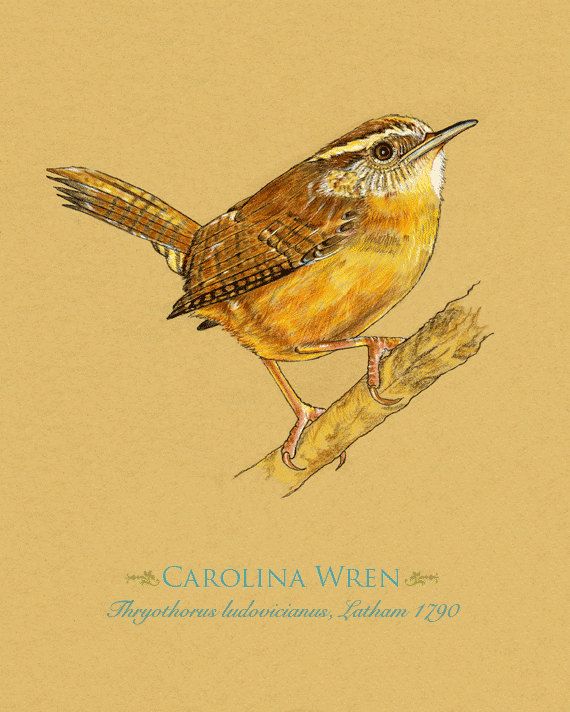 The exoticism of the American Avocet is given by the beak, which in the bird has a long shape. It is bent on ...
The exoticism of the American Avocet is given by the beak, which in the bird has a long shape. It is bent on ...
Andean Condor
This bird is the largest member of the vulture family. The Andean condor, completely unattractive in appearance, plays the role of an orderly, eating carrion. At the same time, he, like ...
Andean Rock Cockerel
If you see this bird for the first time, it will seem that it belongs to the family of parrots. But in fact, she is the closest relative of the sparrow. Andean rock cockerel…
African white-throated vulture
Africa's climate is very hot, arid, which contributes to the growth of the number of animals and birds of the category of scavengers, that is, those that feed on corpses. African belongs to them ...
African marabou
This is the largest member of the stork family.
African marabou is a native inhabitant of the African continent, living a little to the south…
African gray current
The bird is one of the smallest representatives of the large family of hornbills. Its Latin name is Tockus nasutus. It belongs to the order Coraciiformes, the genus of currents…
Its Latin name is Tockus nasutus. It belongs to the order Coraciiformes, the genus of currents…
African eared vulture
This bird got its name due to the large folds of bare skin hanging from the ears on the neck. The African eared vulture, whose plumage is most often dark brown, ...
B
Bald Eagle
As the name suggests, these birds are related to eagles. But they are still systematically closer to hawks. Bald eagles have the Latin name Haliaeetus…
White-faced Owl
Ptilopsis leucotis is the Latin name for this bird species. They live along the border that separates the equator and the Sahara, passes through the Congo, Cameroon, Ethiopia, Côte d'Ivoire....
Steller's Eagle
This bird was not as fortunate as its fellow bald eagle, the symbol of the United States. The habitat of the Steller's sea eagle is annually destroyed by oil companies in Kamchatka....
White stork
The stork family belongs to the category of large birds. It has 19 bird species and 6 genera. All of them are characterized by a long beak. The white stork is a representative of the order of the ankle-footed, the most famous bird ...
It has 19 bird species and 6 genera. All of them are characterized by a long beak. The white stork is a representative of the order of the ankle-footed, the most famous bird ...
Golden eagle
Aquila chrysaetus is the Latin name for golden eagles, large birds of prey. They are representatives of the hawk genus, the falconiformes order. Golden eagles are different from others…
Greater Crax
This bird is the largest in the gokko family. Interestingly, large crabs feed chicks after birth for only 3-4 days. Then their struggle for survival begins....
Big Penguin
Today, 16 different species of penguins inhabit the globe. One of them is big. This species is often confused with the imperial one, which is really the largest of the…
Large toucan
This bird is also called toko. It belongs to the type of chordates, subclass of neopalates, woodpecker order, toucan family. Surely those who love animation will recognize in the bird…
Bearded Vulture
The bird belongs to the hawk family and is distinguished by its large size among other brethren. She is called a bearded man because of a small bunch of bristly feathers located ...
She is called a bearded man because of a small bunch of bristly feathers located ...
Brown booby
This bird is capable of diving head first into the water from a height of thirty meters. So she hunts for fish, plunging into her shoals. At the same time, body blows are softened ...
B
Fan-bearing crowned pigeon
Cute attractive birds in the mating season can prove to be real fighters. So males are able to fight for the female they like. What else is characteristic of this…
Crowned partridge
This small bird is a representative of the pheasant family, the order of Galliformes. She lives in Burma, Thailand, Sumatra. Her characteristic feature is shyness. Learn about others…
Crowned Crane
This species of birds is “registered” in the International Red Book as a bird species in need of protection. The reason is that it has become fashionable to catch crowned cranes for keeping in ...
Crowned eagle
This bird is the record holder for the largest among all flying ones. And the crowned eagle is the largest representative among all birds of prey. It got its name thanks to…
And the crowned eagle is the largest representative among all birds of prey. It got its name thanks to…
Budgerigars
It is this type of bird that is chosen for home keeping. Such pets have a lot of advantages, starting with the original plumage and ending with the imitation of human speech....
Raven
Most of us think that crow and raven are male and female of the same breed of bird. But this is not true. The raven is not the mate of the crow, because it is...
G
Guianan cock-of-the-rock
These are the original birds of the Cotingidae family. Today there are two types of rock cocks - Guianan and Peruvian. They have almost the same way of life, the birds differ only…
Himalayan monal
This magnificent bird is the national symbol of Nepal. The Himalayan monal is a member of the pheasant family. The beauty and attractiveness of appearance made ...
Eyed turkey
This type of turkey is also called peacock. Meleagris ocellata is the Latin name for the bird. It is the most richly colored of the genus of turkeys. This species belongs to…
Meleagris ocellata is the Latin name for the bird. It is the most richly colored of the genus of turkeys. This species belongs to…
Ocellated tragopan
The bird is a representative of the pheasant family and lives in the Himalayas. Locals know the birds by their original blue horns and orange tuft. Ocellated tragopans…
Capercaillie
This bird is the largest representative of the grouse family living in our country. You can meet capercaillie today throughout Russia. Learn about what…
Hoatzin
This is a unique tropical bird. She is called the leader among all smelly birds on Earth. Birds nest right above the surface of the water. We're talking about goatzins. What else is characteristic…
Blue-faced booby
This bird is a member of the booby family. She lives in the seas of the tropics. The blue-faced booby belongs to the genus Copepoda. Its second name is the masked booby. Let's find out…
Blue-footed booby
This sea bird is a representative of the booby family.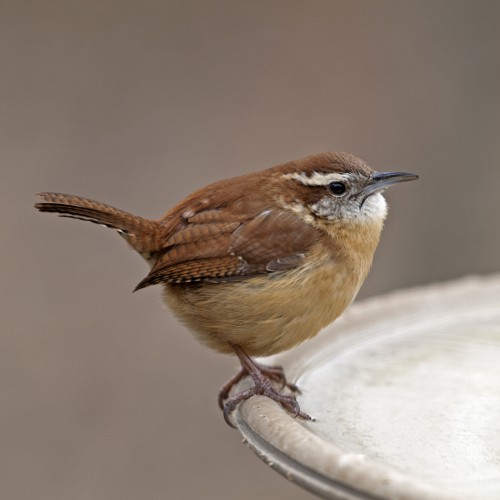 It includes ten species of birds. The blue-footed booby was first studied by Charles Darwin during his stay...
It includes ten species of birds. The blue-footed booby was first studied by Charles Darwin during his stay...
Comb duck
This duck is distinguished by its weight. Its second name is the cone goose. Why is she called that? What is characteristic of the comb duck's lifestyle? How it breeds and…
Maned Pigeon
This bird is also called the Nicobar Pigeon. He is the most beautiful representative of the pigeon family. The bird is the last surviving species of the maned pigeon genus. Let's learn about these…
Vulture guinea fowl
The birthplace of guinea fowl is Africa. There they live in the wild in bushes and thickets in flocks of 80-100 individuals. Such birds run and walk more than they fly. Guinea fowl family ...
Guira
The Latin name of this bird is Guira guira. It is a common type of cuckoo, a feature of which is the non-parasitic breeding of offspring. Unlike…
Gouldian Finches
This bird is one of the most attractive and original in Australia in appearance.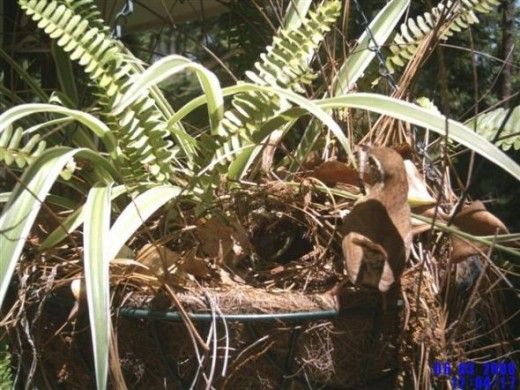 Its Latin name is Chloebia gouldiae. And she got it thanks to John…
Its Latin name is Chloebia gouldiae. And she got it thanks to John…
D
Two-horned kalao
This bird is the largest representative of the gomrai family. Very often, the bird is called that - gomrai or a large Indian rhinoceros. Let's learn in detail about the appearance of the two-horned ...
Long-tailed sylph
Once upon a time, back in the Middle Ages, mythical creatures, which were very light spirits of the air, were called sylphs. They were endowed with the ability to become invisible, to conjure,…
House Sparrow
This bird chirps, which is familiar to all residents of cities and villages, because it lives near people. It nests there. People feed the birds, which helps them a lot in winter...
F
Yellow-eared mourning cockatoo
Calyptorhynchus funereus is the Latin name for this bird. The yellow-eared mourning cockatoo belongs to the subfamily of black cockatoos and lives in the forests of Australia. Learn more about his…
Acorn woodpecker
The world of birds certainly does not know a more thrifty representative than the acorn woodpecker. This pretty-looking and hard-working bird cannot live without acorns, which has served... By the way, the country is a paradise for rare birds. There are 38 species of them. Western Parotia…
This pretty-looking and hard-working bird cannot live without acorns, which has served... By the way, the country is a paradise for rare birds. There are 38 species of them. Western Parotia…
West African Fire Velvet Weaver
This bird belongs to the most charming category. It is also called the red bishop's bird or the red African finch. West African Fire Velvet Weaver…
Green Organist
This small bird is a member of the tanager family. The green organist belongs to the category of bright and beautifully singing birds with a sonorous voice. It is singing…
Golden-haired penguin
This is the most common of all penguin species. Its population, according to various estimates, ranges from 17 to 20 million individuals. But at the end of the last century, there was a trend towards ...
Golden-headed kinglet
Carnation or cockerel are other names for these feathered gingers. Birds are very restless, it is almost impossible to see them sitting on branches.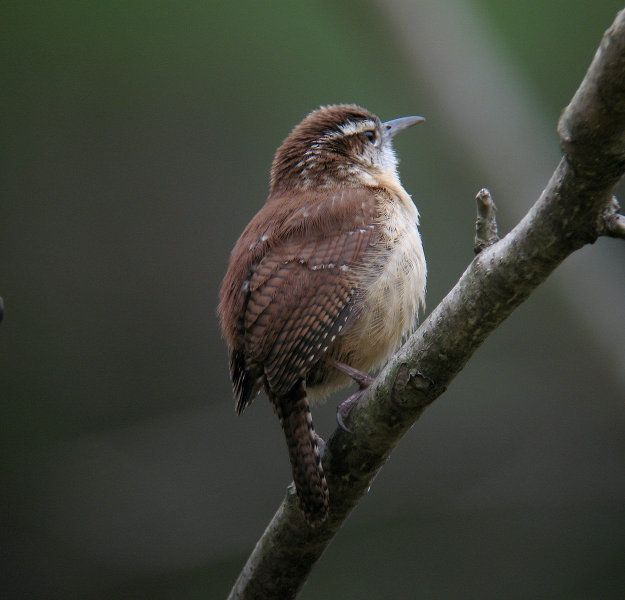 Golden-headed…
Golden-headed…
Golden pheasant
This bird is a very attractive representative of the pheasant family. Its plumage color is simply wonderful, and the sound with which the male calls his partner to motorists ...
I
Emperor penguin
This bird is easily recognizable by its height, black cap on its head, bluish chest. The emperor penguin is a sea bird. During the period of its evolution, it has adapted to life ...
Turkey or turkey
This bird is called differently in different countries. In America it is a gobbler, in England it is a tekki, and we are used to calling it a turkey, that is, a bird of the Indians. Scientists call it “...
Giant white-legged
The second name of this small bird is the smoky frogmouth. Its gigantic white-legged one received thanks to its long mouth, the section of which is equal to half of the bird's head....
K
Cassowaries
These birds have the widest geography of habitat. They are found almost everywhere, in all types of landscapes. Cassowaries are a family in which there are predators and herbivores ....
They are found almost everywhere, in all types of landscapes. Cassowaries are a family in which there are predators and herbivores ....
Kakapo
This bird is unique in many respects. Her main feature is that she cannot fly. The kakapo is the only parrot that only walks. And the reason is…
California Condor
This species of birds is the largest bird in the world. At the same time, California condors are also the rarest birds. For this reason, seeing them in the sky is considered a great success...
California crested quail
This bird is also called the California partridge. It is a member of the toothed partridge family. The California crested quail lives on the West Coast...
Cape Gannet
These birds belong to the category of large sea birds. They live only on six islands off the coast of Africa. Cape gannets are very easy to recognize. After all, the outfit of birds is black and…
Carolina duck
Bright luxurious plumage distinguishes carolinka (as this bird is also called) among other birds. The Carolina duck belongs to the duck family. The bird lives in small shady…
The Carolina duck belongs to the duck family. The bird lives in small shady…
Quezal
This bird is the state symbol of Guatemala. It is also considered a symbol of freedom. Why is this bird so lucky? What is her story? What is characteristic of the way of life ...
Kitoglav
This bird on the African continent is considered the most mysterious and original in its appearance. It lives in the zone of tropical swamps of East Africa, which stretch from…
Royal bird of paradise
This species of birds is considered the most original, precious and exquisite. And they really fully justify the name assigned to them in ancient times - the royal paradise ...
Royal vulture
The bird belongs to the order of storks, the family of American vultures or catartids. And although the appearance of this predatory bird is not very attractive, but you can confidently ...
King penguin
Usually, in the imagination of those people who have never seen penguins in reality, their image is associated with this kind of flightless birds. They are the most numerous, popular, most often…
They are the most numerous, popular, most often…
Red-headed melanerpes
Such an unusual name has a representative of the woodpecker family. Very often this bird is called the red-headed woodpecker. It has a mischievous and energetic character, but a small…
Red-throated Goose
This bird, unlike other ducks, does not shine with many colors, it is smaller than their size. But she could take her rightful place in the bird beauty contest. What is characteristic of the way of life ...
Red-faced Bush Cuckoo
If you look at the photo of this bird, it seems that it is bright and catchy. But in fact, tourists visiting Sri Lanka rarely manage to meet the red-faced bush booby ...
Red-footed booby
Today, there are many species of boobies in the world. But just the red-legged is the most numerous. Ornithologists suggest that this is due to the fact that, unlike their own…
Red-necked Pigeon
This species of birds is another member of the genus Pigeon. It has 50 species, differing among themselves in the color of plumage, reproduction features. But…
It has 50 species, differing among themselves in the color of plumage, reproduction features. But…
Red Macaw
Externally, this bird is very attractive. But the trouble is that the red macaw is in no way suitable for keeping in the house. And the reason is that he sings very loudly, which is unlikely to please...
Red ibis
Unfortunately, the population of these birds is declining today. The reason for this is the continuing interest in the bright plumage of the red ibis. Beautiful birds of the stork order,…
Inca Tern
This original bird is one of the few that can boast of antennae. But in fact, this is not a mustache, but just bunches of white feathers. Also, her appearance is quite…
Mallard
This bird is also called mallard duck. It is the most numerous and famous of all our duck valleys and lakes. Probably hunters know better than others about mallard habits, because…
Dalmatian pelican
This rather large migratory bird is a representative of the pelican family. It belongs to the order of the copepods. The population of Dalmatian Pelicans in Europe is…
It belongs to the order of the copepods. The population of Dalmatian Pelicans in Europe is…
Bush Bigfoot
This bird is also called weed chicken. She almost does not fly, and her friendliness and gullibility make her easy prey for hunters. What else is characteristic of a shrubby bigfoot? ...
L
Forest ibis
This bird has a rather interesting history. The exquisite taste of forest ibis meat has put representatives of this species of birds under the threat of extinction. The forest ibis is similar to its own…
Luzon blood-breasted chicken-pigeon
Those who first saw this original bird think that it is mortally wounded. And this impression is created by a large red spot on her chest. It seems to be…
Bald ibis
The bird belongs to the category of large birds. At one time, this species of birds was considered extinct. But in our time, a few bald ibis can be found in the mountainous areas of South Africa, in ...
M
Malayan fish owl
This bird is a member of the owl family. Malayan fish owls live in Southeast Asia. They are medium-sized owls with distinct feathered ears...
Malayan fish owls live in Southeast Asia. They are medium-sized owls with distinct feathered ears...
Lesser Yellow-headed Catarrh
Savanna Vulture is the second name of the bird, which is characterized by flights almost above the ground itself. There are two types of vulture in the breed: small and large yellow-headed. Feature…
Tangerine
Residents of the Ussuri region also call this bird Japanese. It is brightly colored, with a predominance of orange, hence the name feathered. Mandarin duck is a representative of the genus…
Sword-billed hummingbird
This exotic bird is considered the smallest on our planet. The weight of representatives of the hummingbird family ranges from 2 to 5 grams. The largest individuals have a body length together…
Long-tailed duck or sauk
This pretty bird is also called a winged dandy because it changes its outfit three times a year. Long-tailed duck is one of the most common ducks that lives in . ..
..
N
Nepalese Kalao
The historical homeland of this species of birds is Nepal. But today they are no longer there. There are about 10 thousand of these original and bright birds of the rhinoceros family. They settled in…
Fisher's lovebirds
According to the legend, male and female of this species of parrots simply cannot live without each other. After the death of one, the other immediately dies. That is why they have such a name. Between female…
O
Guinea fowl
This bird is related to all known domestic chickens and quails. The common guinea fowl belongs to the category of flocking birds, but at one time people weaned it from life ...
Common Vulture
This bird belongs to the category of birds of prey. There are two types of these birds - brown and ordinary. They are members of the vulture family. From the brown brother, the common…
Common pheasant
The genus of pheasants includes several species of birds. But only one of them lives on the territory of the CIS. This is a common pheasant. He is a representative of the pheasant family, chicken order ...
But only one of them lives on the territory of the CIS. This is a common pheasant. He is a representative of the pheasant family, chicken order ...
Fire-backed Lofur
This bird belongs to the pheasant family. Its second name sounds like a fiery pheasant. Birds belong to the superclass of tetrapods, the order of galliformes, the genus ...
Necklace parrot
This species of parrot is also called Cramer's bird. She lives 20-30 years, can talk. This is the only parrot species that lives in 2 parts of the world - South Asia and ...
Spectacled eider
This bird is a rare species of the duck family. Its second name is Fischer eider. So the bird was named after the Russian scientist Grigory Fischer von Waldheim. Large…
P
Peacock
This bird is a member of the Galliformes family. The peacock is also the most beautiful species of birds on the planet. Pheasants and wild chickens are considered relatives of the bird. Let's find out in detail.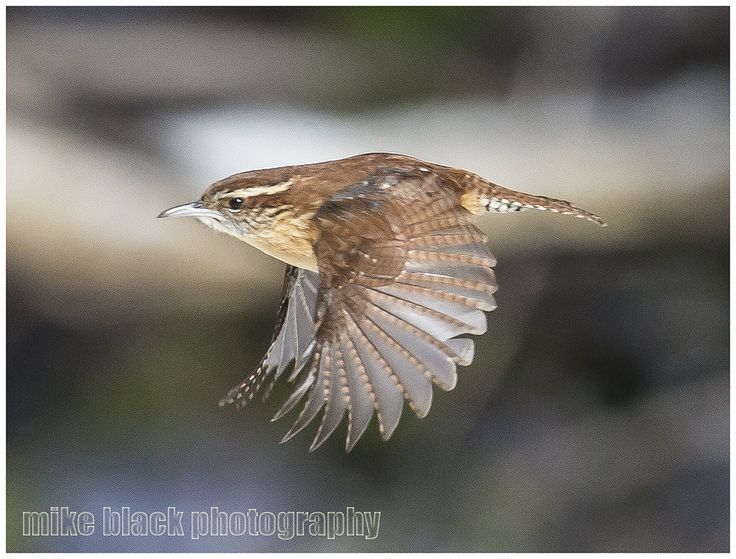 ..
..
Palawan Peacock Pheasant
At first sight of this bright bird with a long tail, there is no doubt that this is a real peacock. A small inhabitant of the Philippine island of Palawan on the very…
Pelicans
These are large water birds. They are the largest representatives of the copepod order. Today, ornithologists distinguish seven species of pelicans, which are united in a family ...
Quail
The bird is a member of the hen order, the pheasant family. Two types of quail live on the territory of Russia: ordinary and dumb (East Siberian). The latter is characterized by…
Peruvian gannet
A small family of gannets belongs to the order of pelicans or copepods. All 9 species of these birds, including the Peruvian, are relatives of the phaetons,…
Variegated Turpan
The bird with an exotic name is an ordinary duck. The variegated scoter is a waterfowl, small and belongs to the family of ducks. And originality to her . ..
..
Adélie penguins
These flightless birds are given such an exquisite name in honor of the wife of the French feathered researcher Dumont-Durville. Adélie penguins really correspond to the human…
Lovebirds
These are one of the most popular types of parrots for home keeping. Unlike wavy ones, these talk less and are less capable of learning. They need free…
Amazon Parrot
Ornithologists divide these long-lived birds into 26 subspecies. Amazons are large parrots, so they require a lot of space. Unlike their other relatives, they can…
Macaw
These birds have the strongest beak in the category of their relatives. Ara parrots, moreover, are very noisy, large, but also talkative. They lend themselves well to training…
Jaco parrot
This bird is also called the gray parrot, it belongs to the genus Psittacus, it is the only representative in it. Bird breeders love Jaco for the amazing ability of a “plagiarist…
Cockatoo parrot
It is not recommended to have these birds in the house if the owner is too busy a person. Suffering from a lack of human attention, cockatoos turn into hooligans, evil and eternal ...
Suffering from a lack of human attention, cockatoos turn into hooligans, evil and eternal ...
Kakapo parrot
It is also called the owl parrot, and the main feature of the bird is that it does not fly. Originally from New Zealand, the bird in the wild lives only there, high above sea level. So…
Kea parrot
This big bird lives in the forests and mountains of New Zealand, more often on the South Island. She has a bad reputation there. The Kea parrot is capable of killing sheep, which is why the local shepherds…
Rosella parrot
These birds belong to the category of medium-sized birds. They live in Australia and on the island of Tasmania.
Rosella quickly run across the ground in search of…
Kiwi bird
There are five species of these birds in the world today. Kiwi is not so easy to meet. After all, this is a partisan bird. Its colors and mannerisms indicate that kiwi…
Secretary bird
An animal with an interesting name is a distant relative of harriers, falcons, vultures, buzzards.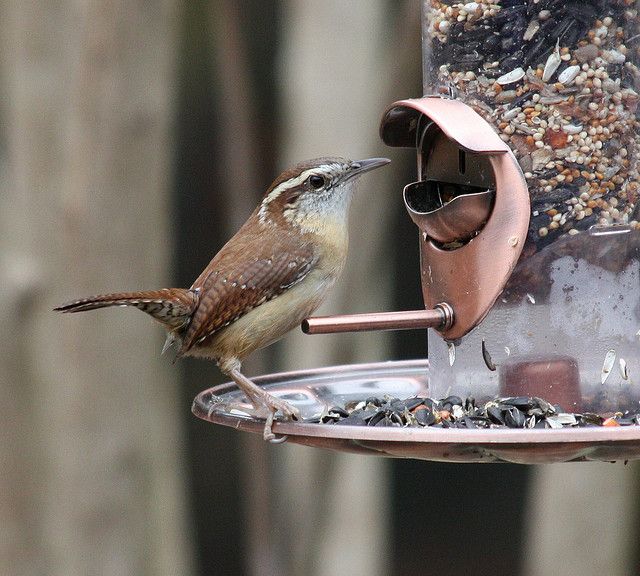 But relatives feel more confident in flight, and the secretary bird - on the ground. She doesn't…
But relatives feel more confident in flight, and the secretary bird - on the ground. She doesn't…
Purple tanager warbler
When you look at the tiny birds jumping on the branches, they resemble flames. Therefore, it is so hard to believe that these birds are close relatives of the usual ones ...
Puerto Rican tody
This species of birds got its name due to its habitat - the Puerto Rican rainforests. The bird harmoniously fits into the colorful landscape of the forest with waterfalls and…
R
Multi-colored painted malor
Low and dense bushes in the center and north of the Australian mainland are the favorite habitats of original bright birds, which in the mating dance give their chosen ones yellow…
Widow of Heaven
Most of us know that the cuckoo is the worst mother of all birds. The name of the bird has become common for those women who get rid of their children, do not want to…
Paradise flycatcher
This bird does not live in the Garden of Eden. Its place of permanent residence is the western regions of the Primorsky Territory of the Russian Federation, large territories from India to Turkestan ...
Its place of permanent residence is the western regions of the Primorsky Territory of the Russian Federation, large territories from India to Turkestan ...
Paradise tanager
Seven-colored bird. This is the second name of the paradise tanager in its homeland, in the tropical forests of the east and north of the Amazon basin. Both females and males look equally elegant, because ...
Pink-headed Pigeon
These original birds, unlike other pigeon relatives, you will not meet in an ordinary zoo. And the reason is that the pink-headed spotted dove doesn't like to live in captivity…
The pink-capped spotted dove
This pretty bird has bright and attractive plumage. However, this does not prevent her from disguising herself among tropical foliage, because she is also colorful. The pink-capped pelican inhabits…
Pink pelican
Large bird is a member of the pelican family and, after the closest relative of the Dalmatian pelican, ranks second in size.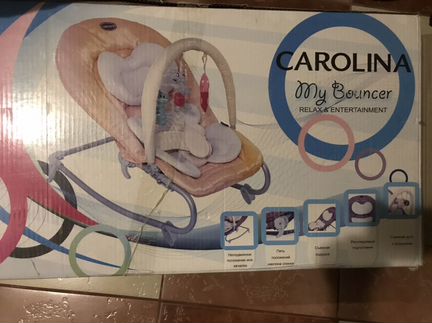 The pink pelican has the same ...
The pink pelican has the same ...
С
Peregrine falcon
This bird is the leader among all those existing on the planet in terms of flight speed. The peregrine falcon develops it up to 110 kilometers per hour. After him boast of speed of movement in the air...
Northern Caracara
These birds are visually similar to long-legged vultures, have the habits of a vulture, but belong to the falcon family. Northern caracaras live in endless expanses…
Saddle-billed yabiru
This bird is also called simply saddle-billed. The saddle-billed yabiru is the largest member of the stork family. We learn about his habits, the method of reproduction, nutrition, socialization ...
Barn owl
The Latin name of this bird is very aristocratic - Tyto alba. And in Russian it sounds just like a barn owl. This is an owl, which can be found in any part of the earth…
Ostriches
These birds are notable for being the largest on the planet, as well as the presence of only two toes.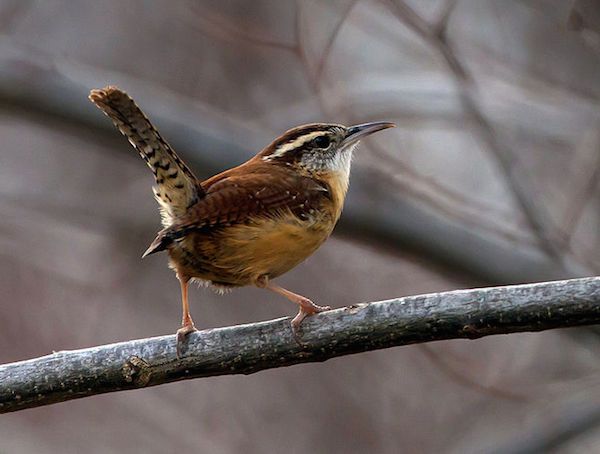 Ostriches can weigh more than a hundred kilograms, which does not hinder them…
Ostriches can weigh more than a hundred kilograms, which does not hinder them…
Sulawesian Kalao
The first impression upon seeing this exotic bird is a screamer in a helmet. It is she who is the main attraction of the appearance of the Sulawes kalao. The bird is…
Sultan chicken
This bird is simply called Sultan. A rather large blue-blue bird is a member of the shepherd family. It lives in the Eastern Hemisphere, in the zone from ...
T
Takahe
Few birds that were considered extinct, were able to revive their population again. These include birds with an interesting name takahe. It can be called a phoenix bird,…
Sagebrush grouse
This bird is the largest among the entire family of grouse in North America. They fly very fast, but take off hard. It is not difficult to guess that in some places their main ...
Thick-billed penguin
The second name of this bird is the Victoria penguin. It is very similar to the Snare crested penguin, so it is easy to confuse the brothers.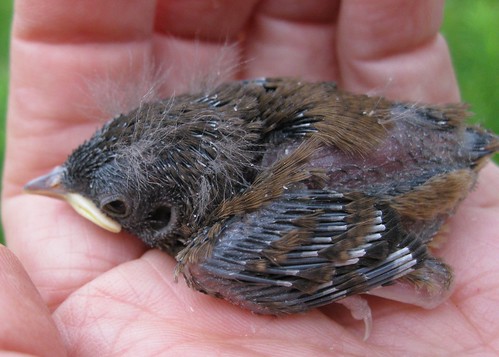 What is characteristic of a thick-billed penguin? What…
What is characteristic of a thick-billed penguin? What…
Tragopan-satyr
In the attractive regions of India, Bhutan, Nepal in the east of the Himalayas, in the shade of cedars or on the branches of magnolias, in the thickets of rhododendron lives a pheasant of rare beauty. He even has a name…
Banks' Funeral Cockatoo
This bird is one of the most expensive birds kept in captivity. Banks' mourning cockatoo is a rare bird, it is not so easy to buy it if you wish to enjoy it ...
Turukhtan
This bird is a member of the wader family. Its name takes its roots from oriental languages. Previously, turukhtan was called kuruhtan, which meant "a bird that looks like a chicken." And in…
U
African Bridle Trogon
These monogamous birds live throughout the African continent. African bridle trogons prefer forest edges and gorges, mountain slopes and areas covered with dense forests. It can be found in territories from the Atlantic coast to the Pacific. The mustachioed tit prefers reeds there ...
The mustachioed tit prefers reeds there ...
Kamenushka Duck
This is a small duck. Despite its modest size, the Kamenushka duck easily endures the hardships of living in the northern zone. It usually nests in Siberia, on…
Long-eared Owl
This medium-sized bird is a member of the owl family. It is not difficult to guess that its main feature is the presence of the so-called ears, which are…
Long-eared cormorant
This large bird is a representative of the cormorant genus. The eared cormorant lives in the north of America. He is interesting for his forethought. Like a true gentleman…
F
Philippine monkey-eater
This bird is a strange creature. It is rare, sometimes called a harpy, but it rarely feeds on monkeys. So the name "Philippine monkey-eater" doesn't quite match the essence...
Flamingo
This is a family of birds, which are characterized by long thin legs, flexible neck, jaws that help filter food extracted from silt.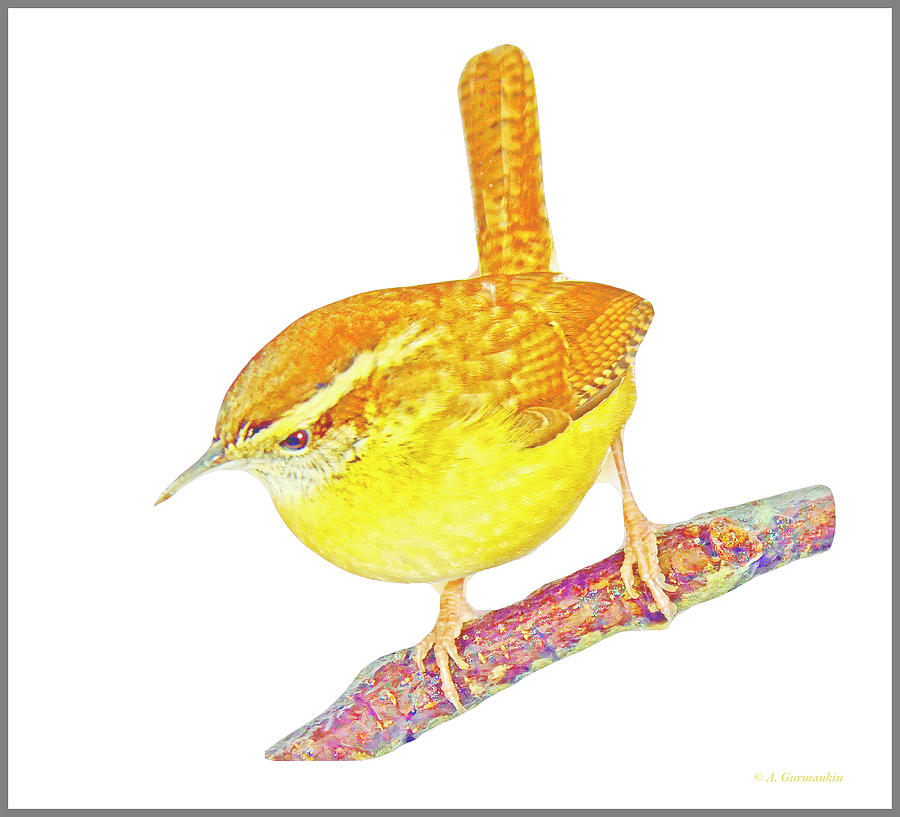 Flamingos are characterized by a colonial way of life,…
Flamingos are characterized by a colonial way of life,…
Frigatebirds
The flight of these birds in the sky is a very beautiful sight. They form the letter W with their narrow and long wings. At the same time, it is impossible to see their flapping. Frigates almost never make them, ...
X
Crested karyama
These birds do not like to fly very much. From dangers and enemies, they flee. Their cubs are very similar to dragons. Crested karyama has a second name - seriema. Than…
Crested Pitohu
The second name of this bird is the thrush flycatcher. And although not much is known about her habits today, ornithologists know for sure that she is poisonous. About this dangerous feature...0008 This small songbird belongs to the weaver family, the order of passeriformes. The black-fronted weaver is one of the species of African weavers, the most numerous in the family....
Black stork
These birds nest in the vast territory of Eurasia.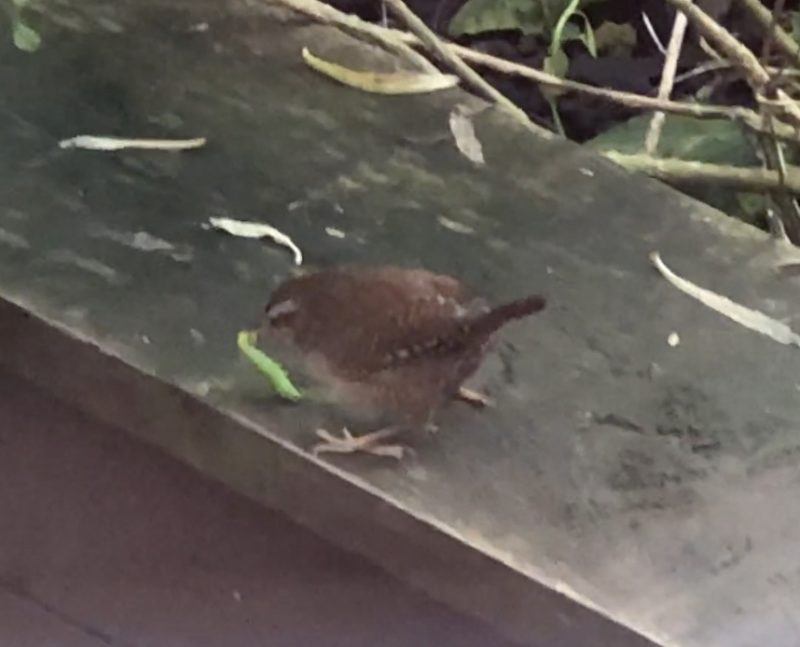 There are many settlements of the black stork on the territory of Russia to the Far East, in the region of Primorye and in the southern zone of Russia - in ...
There are many settlements of the black stork on the territory of Russia to the Far East, in the region of Primorye and in the southern zone of Russia - in ...
Black vulture
This bird belongs to the category of predators. Many people do not like such birds because they feed on disgusting carrion. But on the other hand, if not for...
Black cockatoo
This bird is an imposing member of the cockatoo family. She has a peculiar character, because of which it is simply unbearable to keep such a pet in the house. What is characteristic of life…
Black Swift
This bird is often seen by residents of cities in the European part of Russia. Black swifts do not have sexual dimorphism. It's just that in young birds the plumage is a little lighter, bordered along ...
Yu
South American harpy
In ancient Greek, the word "harpazein", that is, harpy, means "abduction". Once upon a time, the harpies were considered the winged daughters of Typhon, faithfully guarding the entrance to Tartarus.